Best waterproof camera 2025: the finest cameras for underwater shooting
Make a splash with the best waterproof cameras
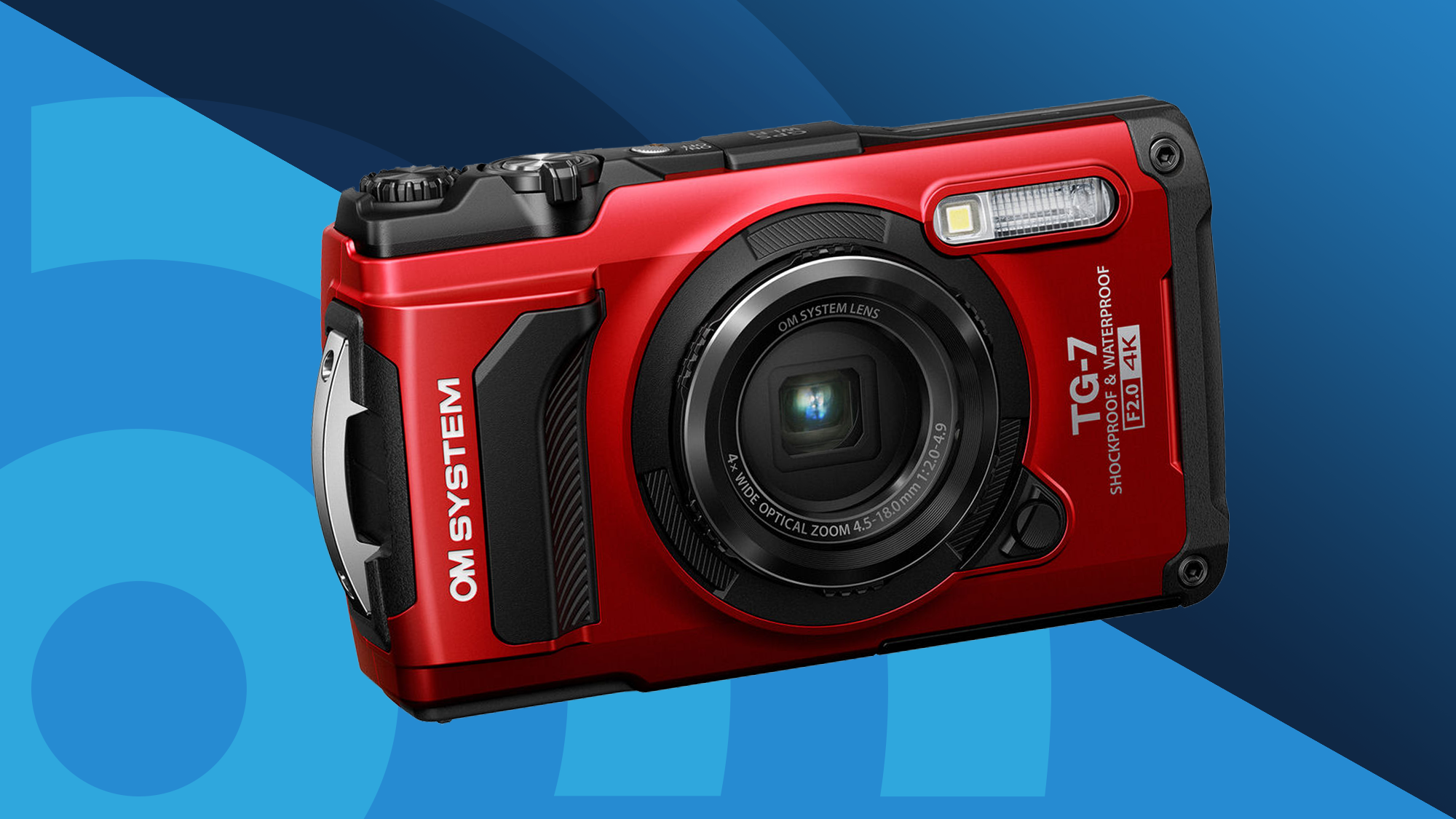
Whether you're sea swimming or kayaking along a river, the best waterproof cameras let you capture unique perspectives that you couldn't dream of getting with your phone. They won't get damaged by water, plus they will keep out sand and take knocks, too, making them ideal cameras for holidays and families.
Our testing of all the latest models has shown us that waterproof cameras take many different forms: some 'tough' models are ideal shooting sea-life stills during dives; while other 'action' models are perfect for capturing easy videos. However, if we had to choose a waterproof camera for ourselves, we’d go for the OM System Tough TG-7. Its 4x zoom and useful photography features make it a surprisingly versatile shooting tool, even if its image quality isn’t up there with the best.
There’s every chance that a different camera will be a better choice for you, especially if you're keen on shooting video, for which a camera like the Osmo Action 5 Pro is a superb, rugged choice. This guide provides a comprehensive overview of the top waterproof cameras you can buy in 2025, summarizing our in-depth reviews, together with the strengths and weaknesses of each camera. You’ll find options for every budget below, as well as useful buying advice to help you decide.
Top 3 picks
Want to get straight to the best waterproof camera? Use our round-up below to quickly find a waterproof camera that suits you. You can find out more about it by jumping to our full write-ups using the links.
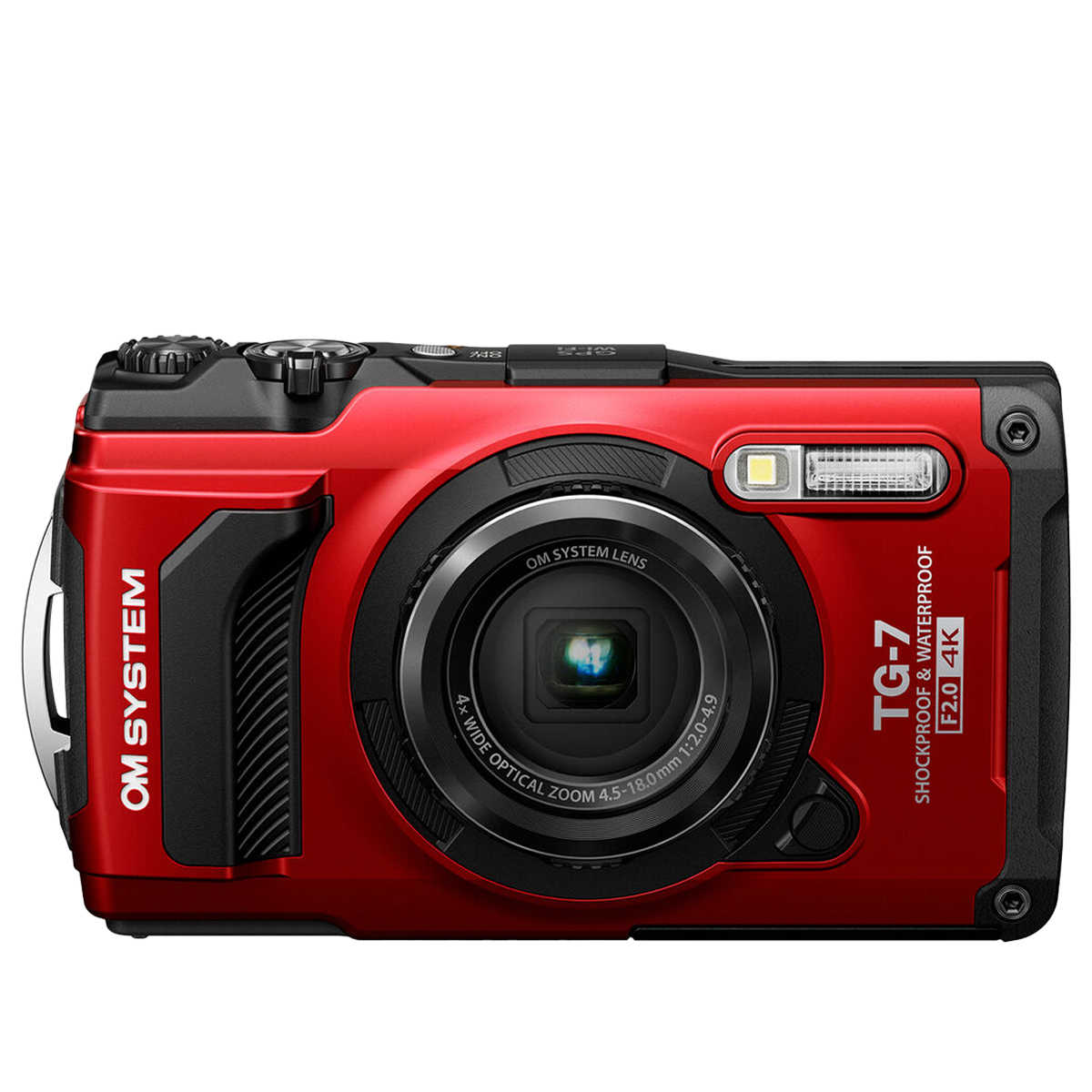
The best waterproof camera overall
Compact but rugged, the Tough TG-7 is a great grab-and-go waterproof camera with a generous set of photography features for the price.
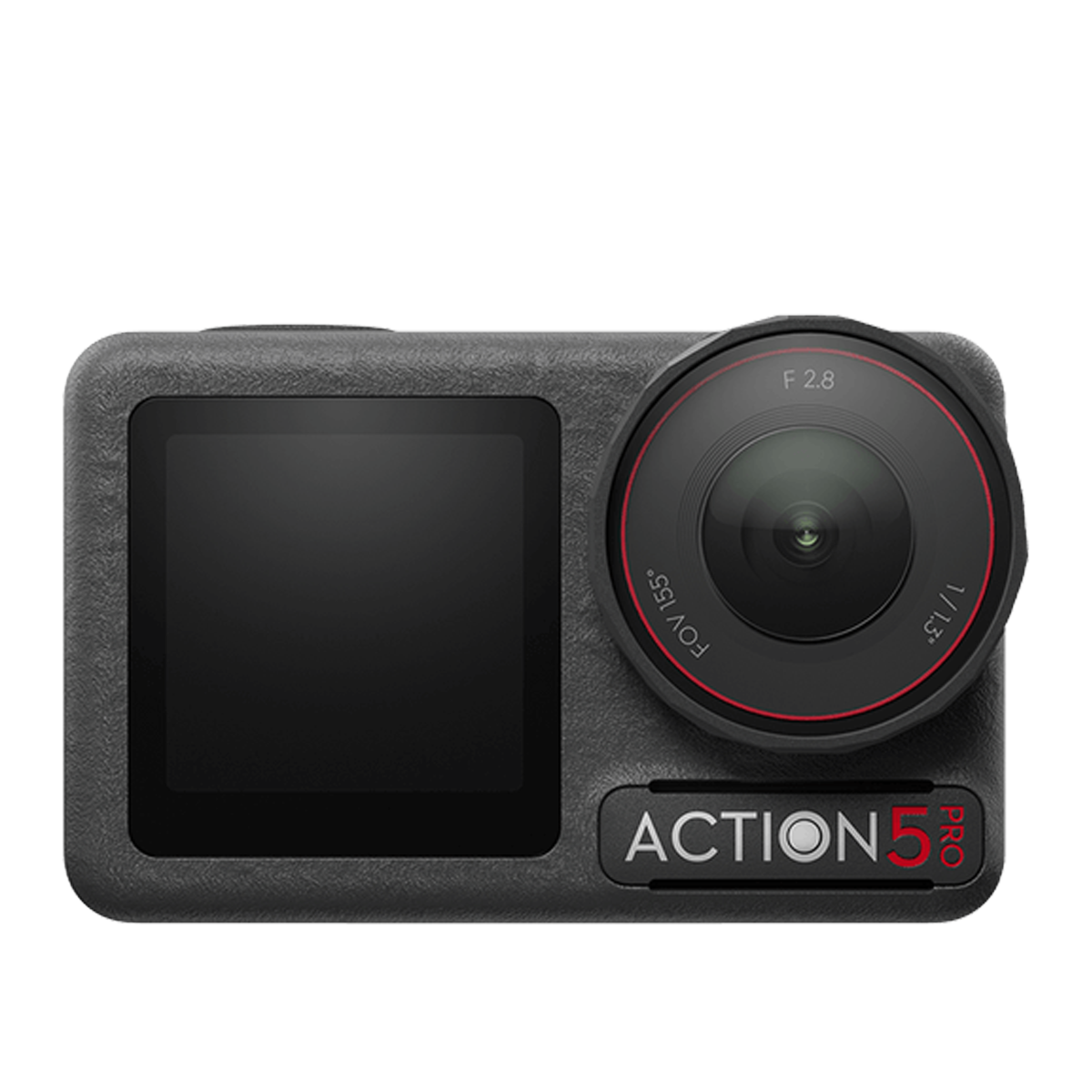
The best waterproof camera for low light
Waterproof to 20m and up to 60m with case, the Osmo Action 5 Pro is our top action camera pick for underwater adventures, complete with excellent low-light image quality.

The best waterproof action camera for accessories
GoPro’s flagship is packed with video tricks, is waterproof to 10m or 60m with a case, and has enviable accessories, including a waterproof charging dock.
Best by use-case
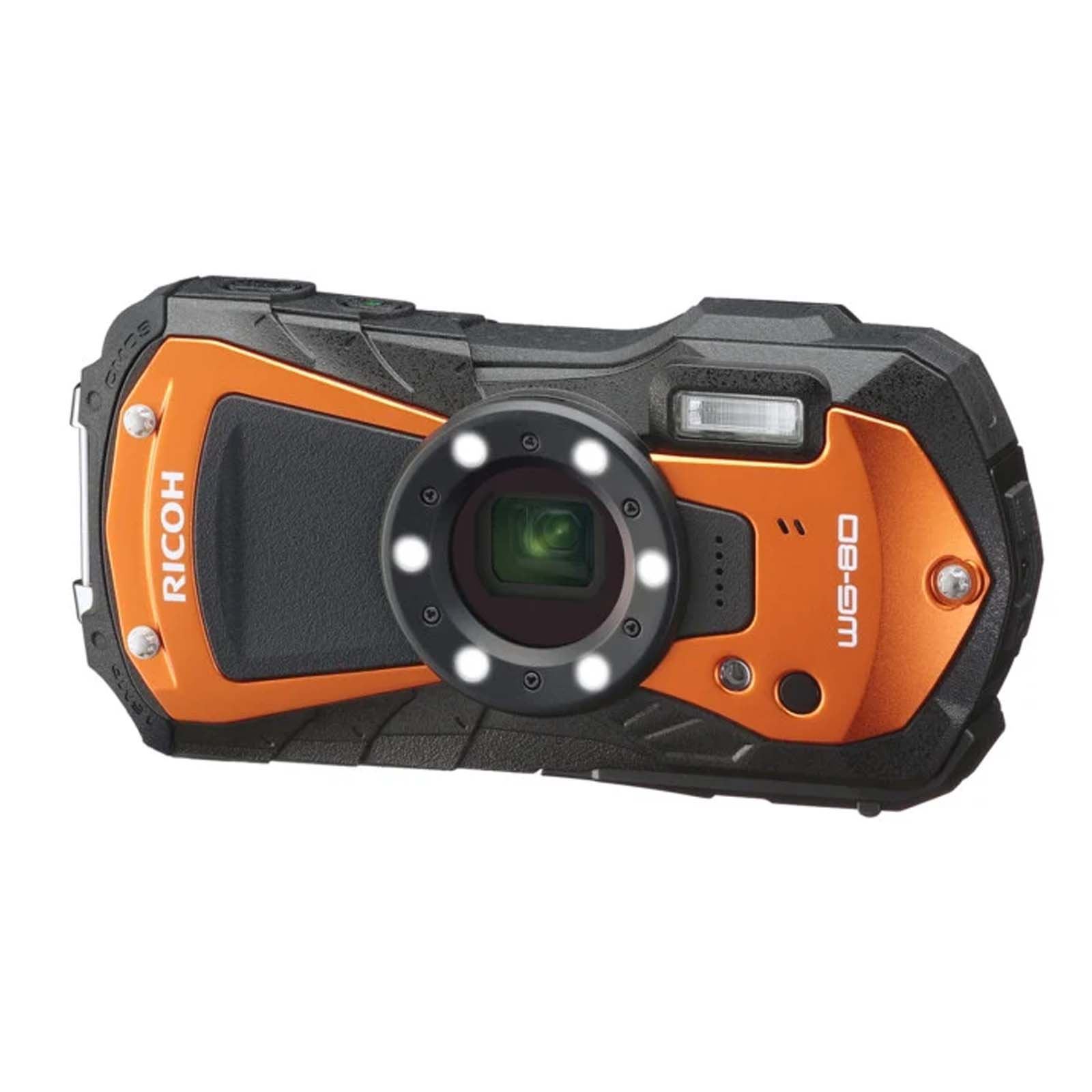
The best waterproof camera with LED lights
5x optical zoom gives the WG-60 versatility when framing, while six LED macro lights around the lens are handy for illuminating underwater subjects.
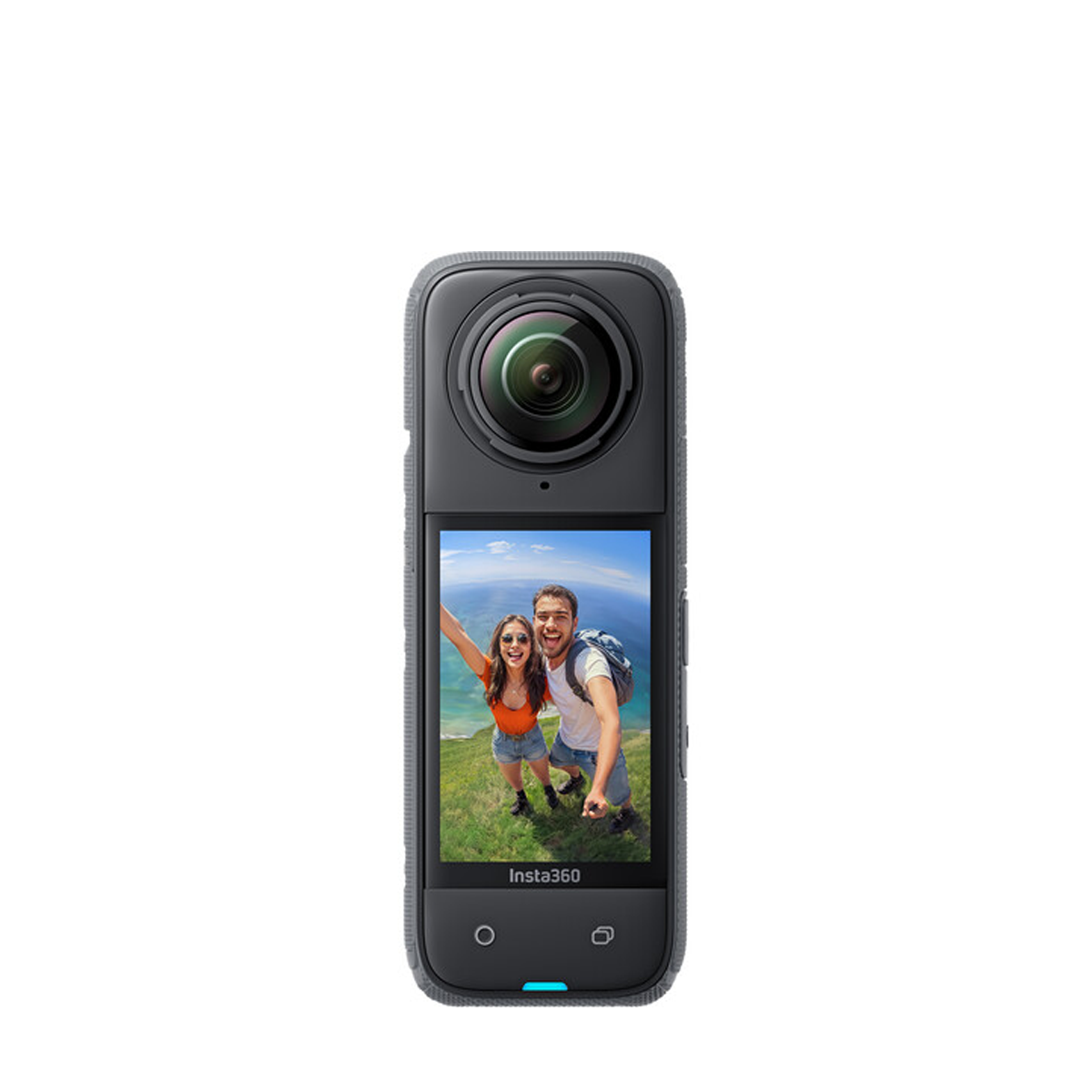
The best 360 degree waterproof camera
Waterproof to 10m, this class-leading 8K camera lets you shoot underwater footage in 360 degrees, capturing truly unique footage.
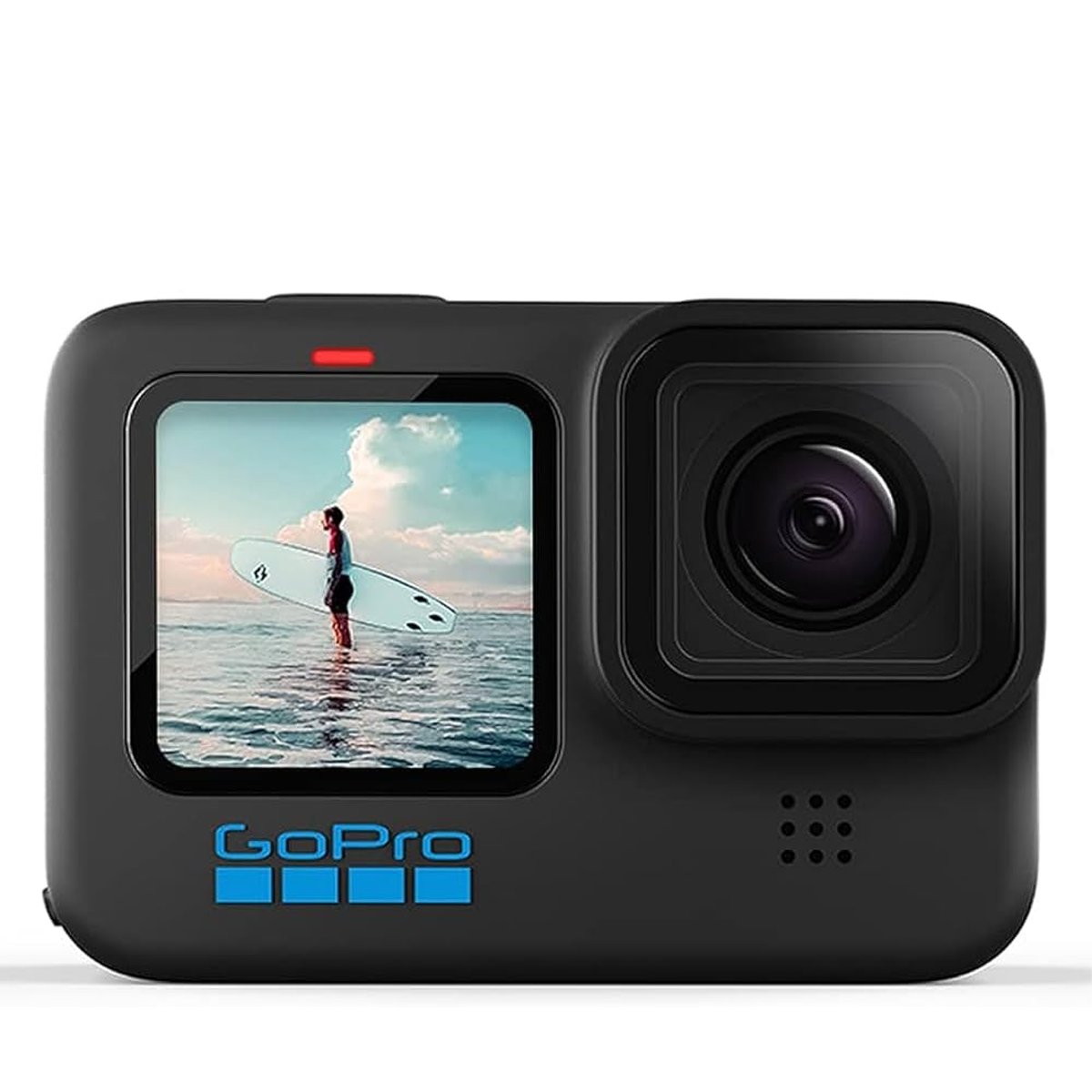
The best budget GoPro
No longer the flagship GoPro, the Hero 10 Black is still available new for a lower price than the Hero 13 Black, while still shooting 5.3K video at depths of up to 10m.
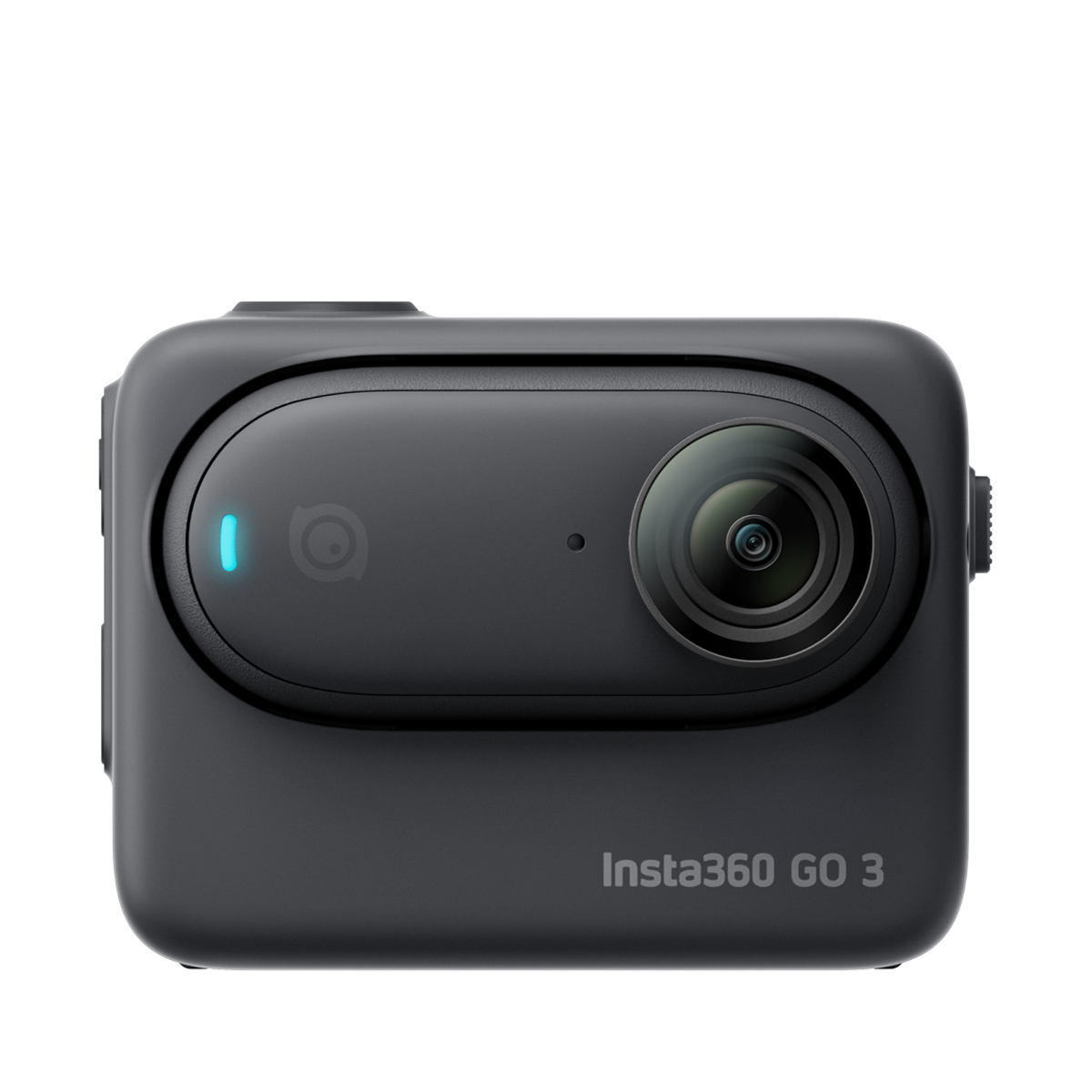
The best miniature waterproof camera
Its Action Pod is only splashproof, but the tiny Insta360 Go 3S itself is waterproof to 10m, while AquaVision 2.0 enhances underwater video in the app.

Tim is TechRadar's Cameras Editor. He's worked for more than 15 years as a photographer and technology journalist, giving him a unique insight into what makes an excellent camera. He's had the opportunity to shoot with a whole range of kit during his career, including many of the best waterproof cameras. Tim notes, "we've included a wide variety of waterproof cameras in this guide, from tough models designed to capture stills at impressive depths, to action cameras that make it easy to shoot sharp footage of your water adventures."
The best waterproof cameras in 2025
Why you can trust TechRadar
Below you'll find full write-ups for each of the best waterproof cameras in our list. We've tested each one extensively, so you can be sure that our recommendations can be trusted.
The best waterproof camera for most people
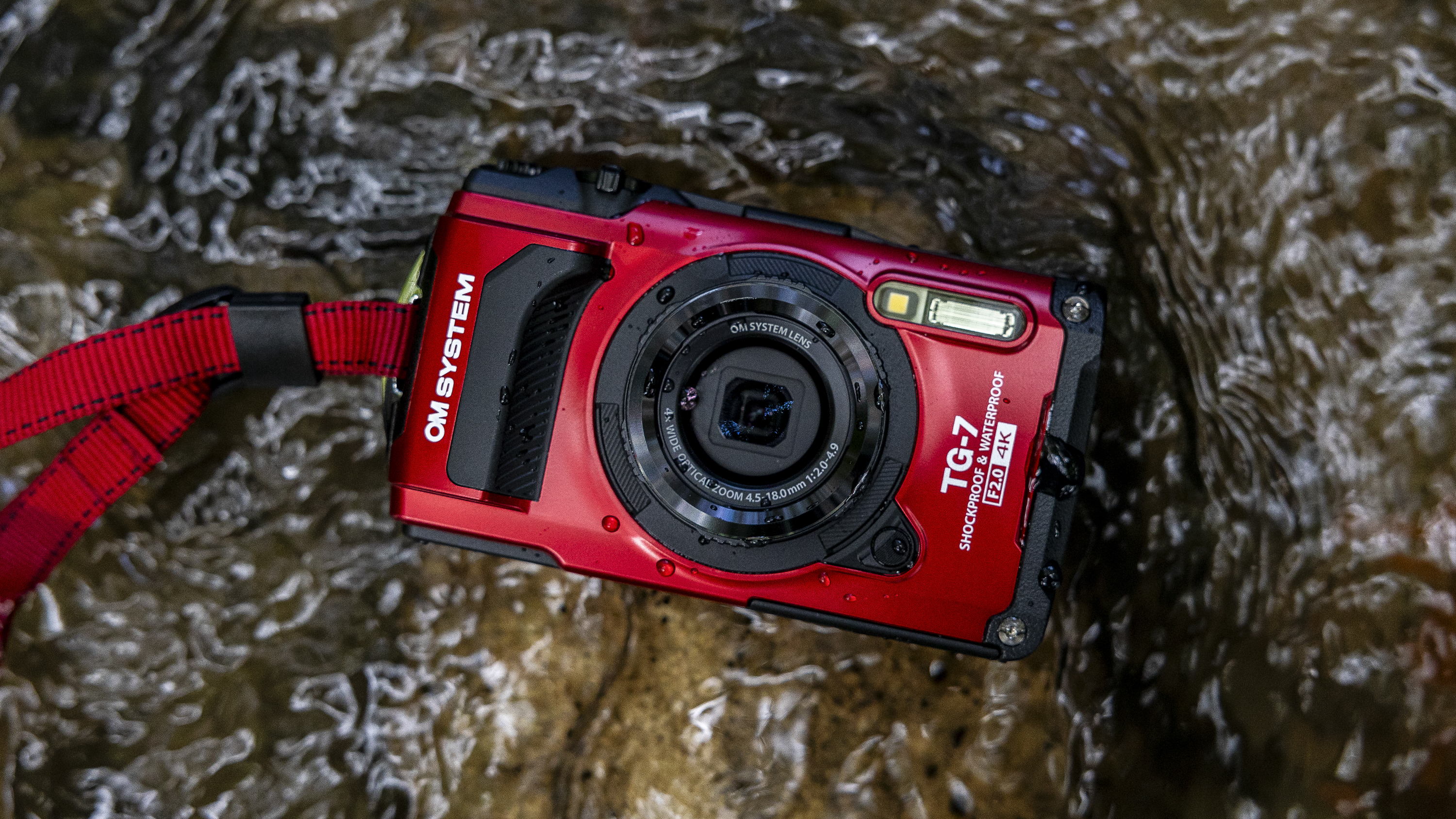
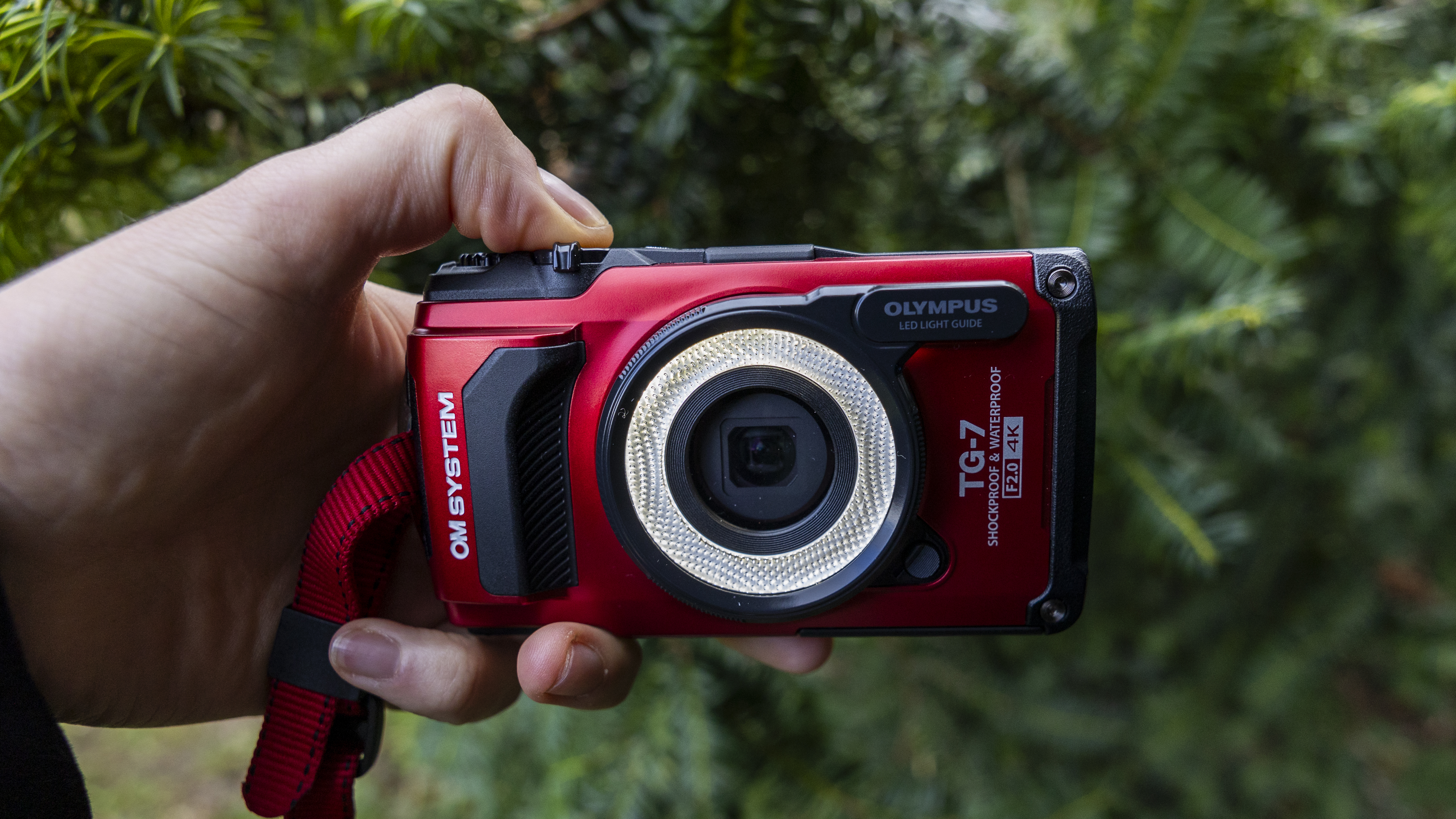

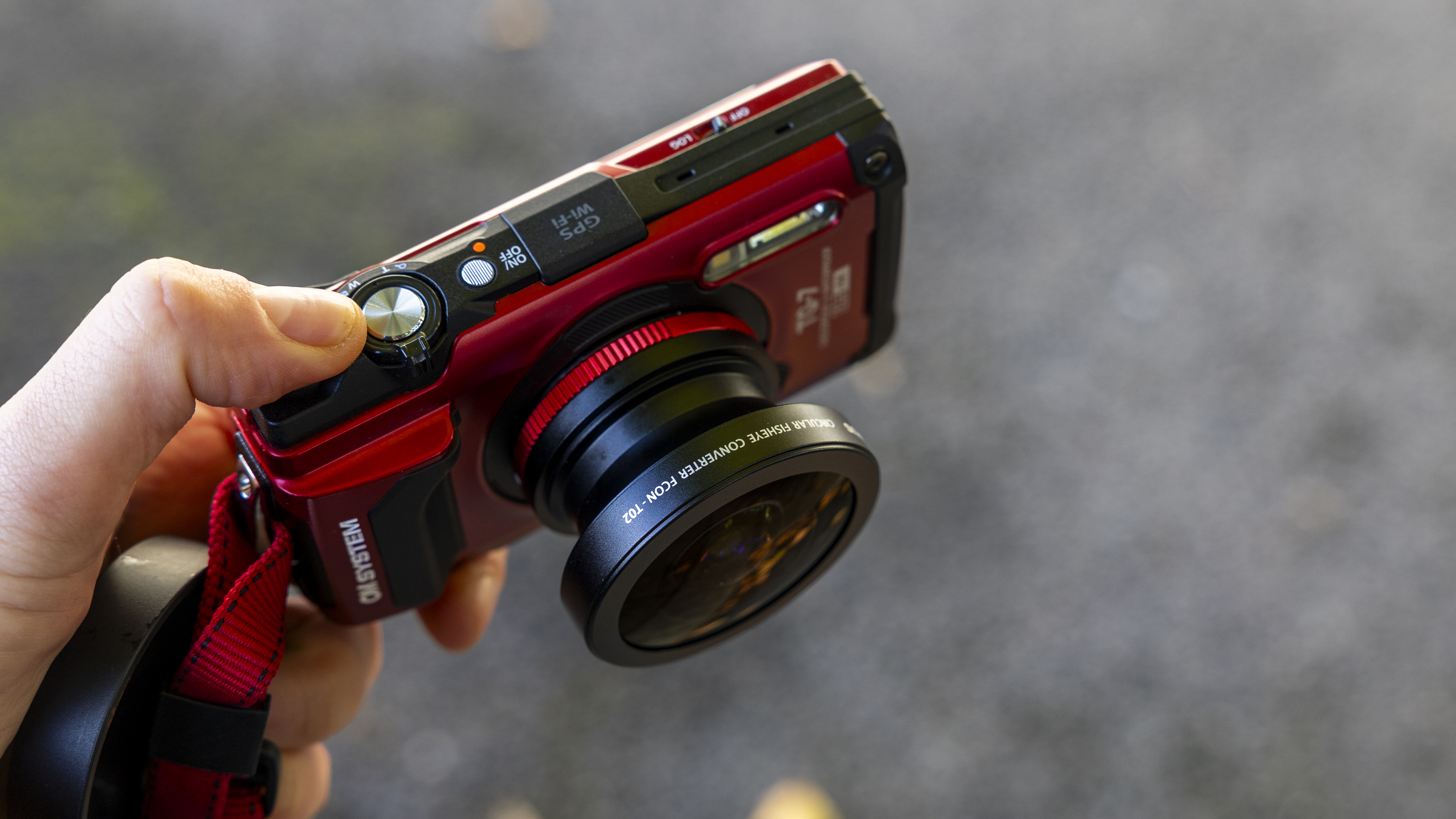

Specifications
Reasons to buy
Reasons to avoid
✅ You’re into underwater photography: The TG-7 has a number of useful shooting modes, including white-balance adjustments based on water depth.
✅ You want a really tough camera: Besides being waterproof to 15m, the TG-7 is also protected against dust, sand and drops, as well as freezing temperatures.
❌ You want the best possible image quality: Even with its scene modes, the TG-7 is limited by its 12MP sensor, which lags behind the latest smartphones.
❌ You already own the Tough TG-6: While the TG-7 is an improvement, it doesn’t do enough to justify swapping from the previous model if you already have it.
It’s not a huge upgrade over the Tough TG-6, but with a rugged, pocket-friendly build and plenty of photography features, we think the Tough TG-7 is a great grab-and-go option for most people. Although its 3-inch screen isn’t touch-sensitive, its tactile array of buttons makes it easier to handle than a GoPro in tricky conditions, particularly for beginners. And as the name suggests, this is a camera to take anywhere: waterproof to 15m, it can also survive dust, drops, crushing and freezing.
In testing, we found that image quality from its 12MP sensor can’t compete with many modern smartphones, even with a fast f/2 aperture at the wide end of the 25-100mm zoom range. 4K/30p video also looks a little dated. Yet the TG-7 does benefit from a surprising number of shooting modes, including macro focusing and white balance presets which match different water depths. The real benefit lies in its practicality, allowing you to shoot without fear in the waves.
Read our in-depth OM System Tough TG-7 review
The best waterproof camera for low light
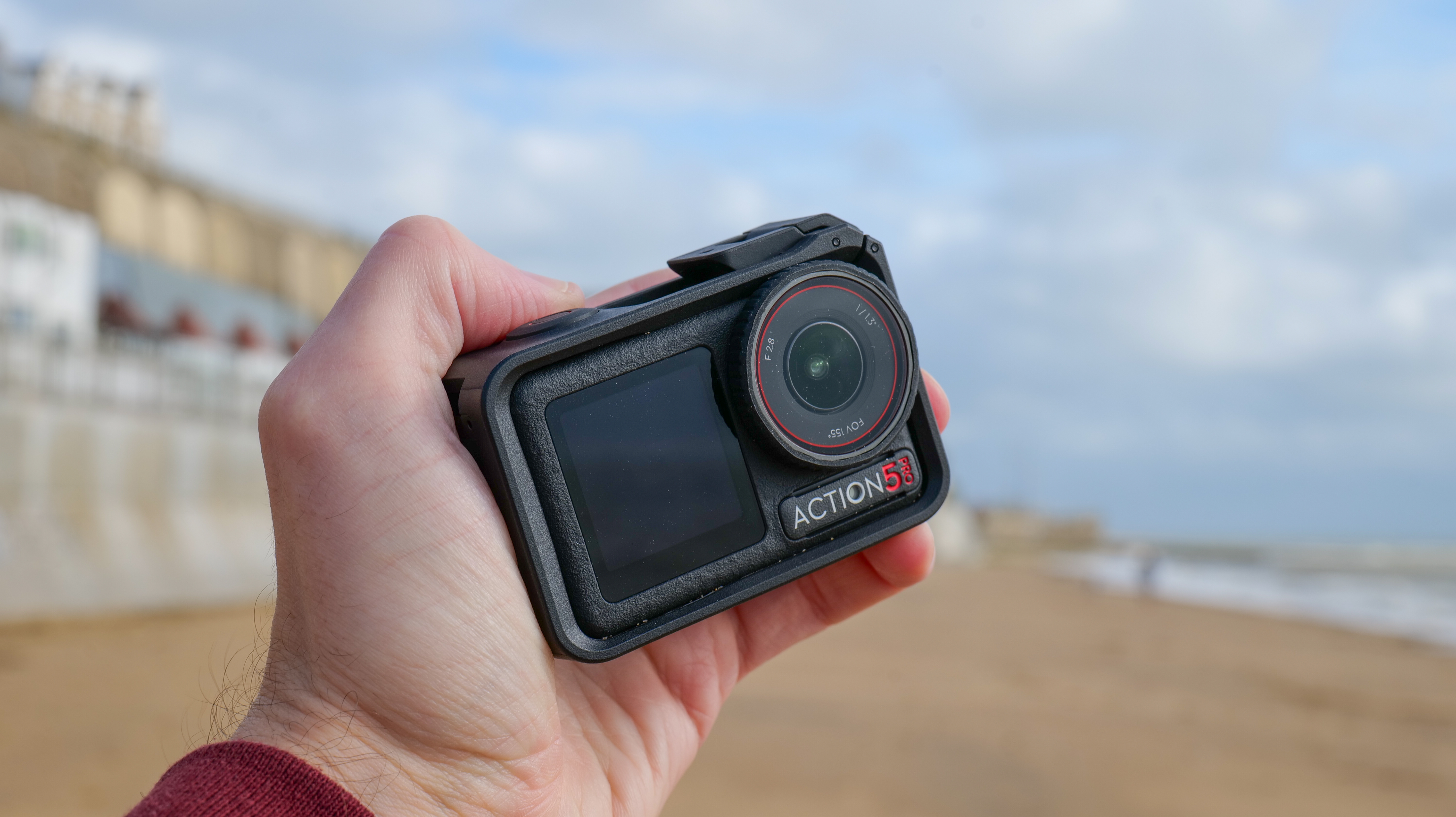
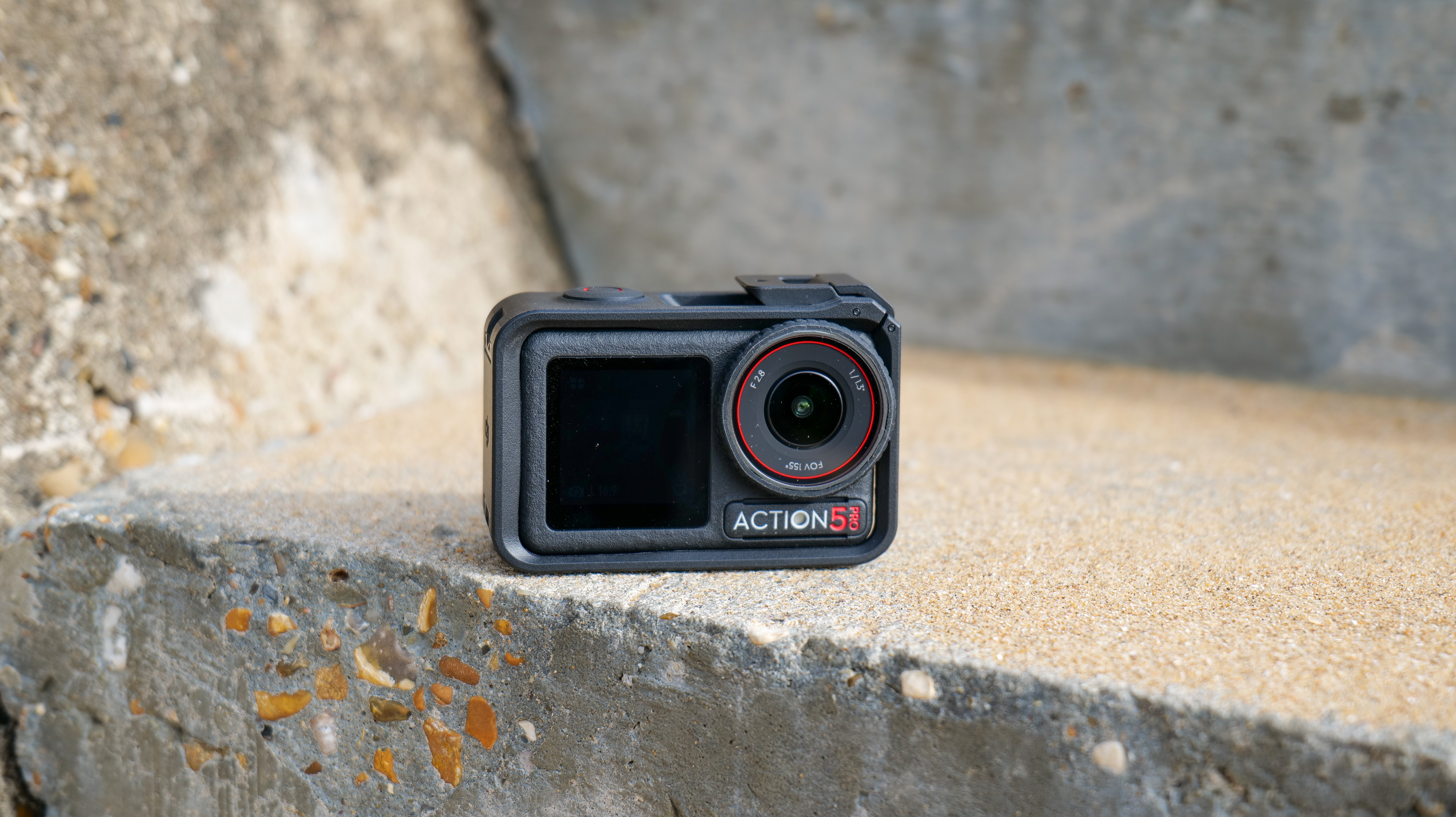
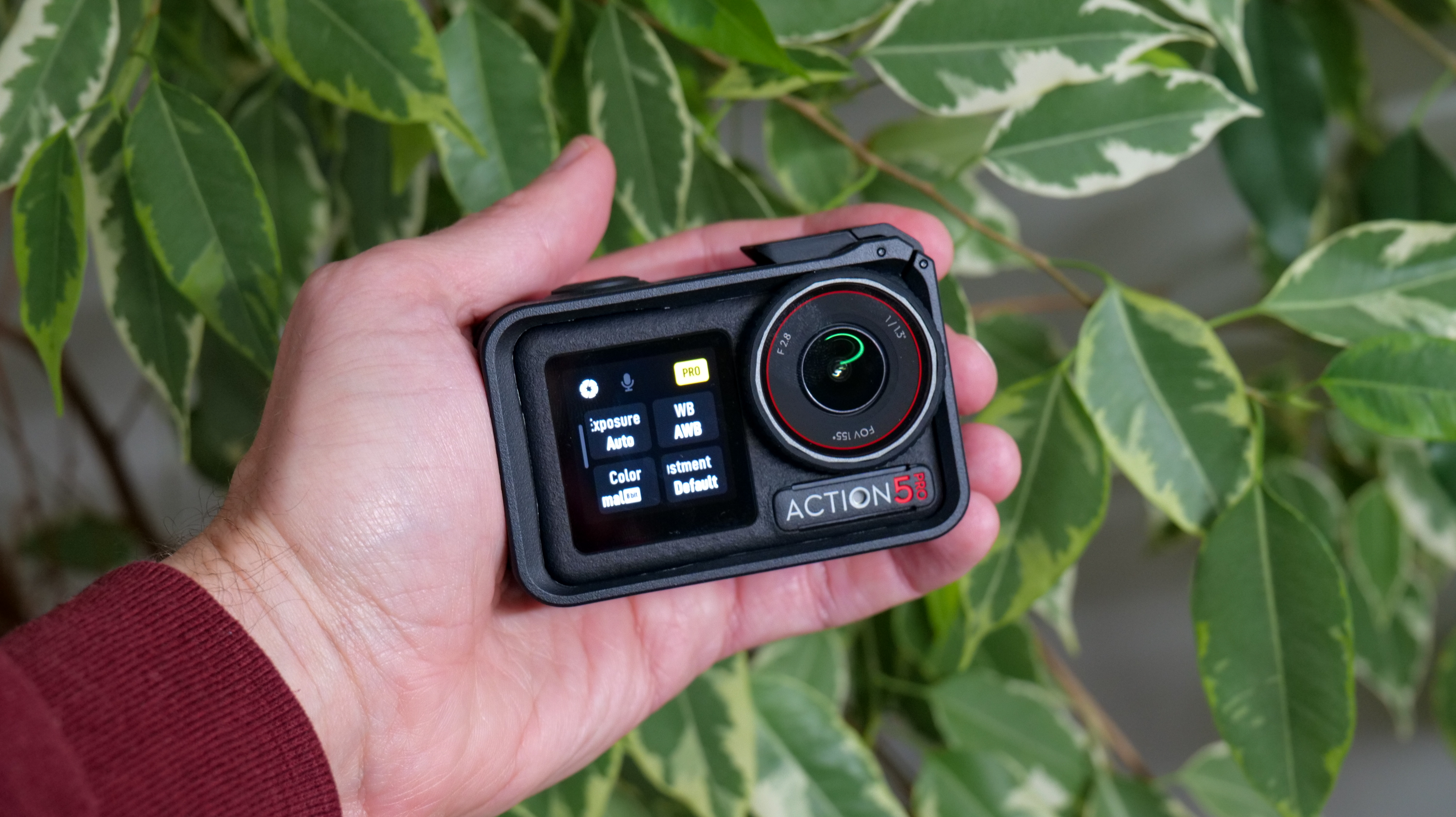

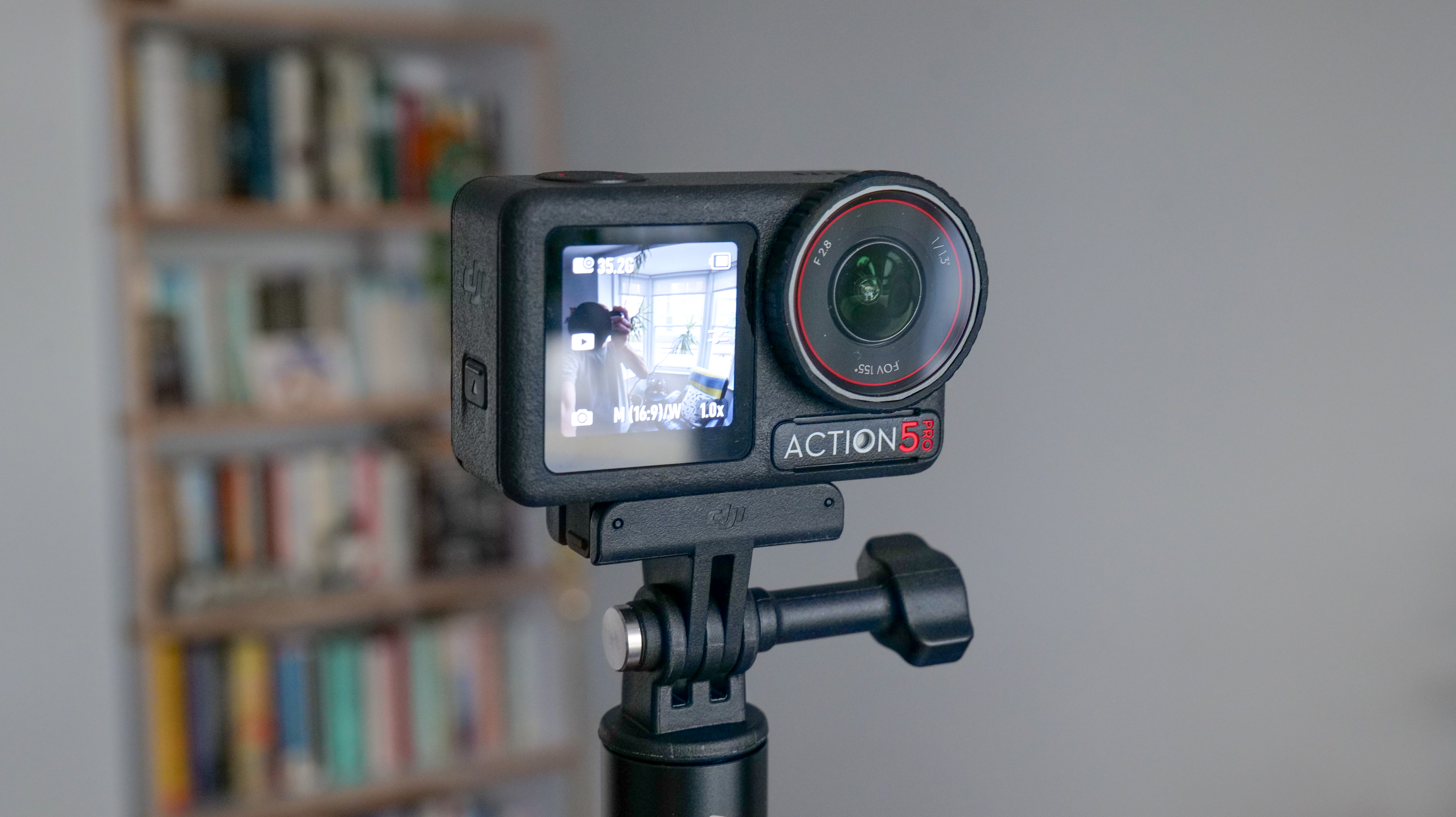
Specifications
Reasons to buy
Reasons to avoid
✅ You want really good waterproofing: The Osmo Action 5 Pro is rated as waterproof down to 20m without a case, making it a standout camera.
✅ You need clear sight: The Action 5 Pro’s upgraded dual OLED screens are easier to see in low light and the main screen is bigger than before.
❌ You like to get up close to subjects: The Action 5 Pro’s 1/1.3-inch sensor and 155-degree lens are great, but the result is a limiting 0.4m minimum focus distance, so shots of tiny details aren't possible.
❌ You want high resolution video: Video quality is great, but it is capped to 4K whereas GoPro and Insta360 rivals shoot 5.3K and 8K video respectively.
GoPro now has two big action camera rivals, DJI and Insta360, and the Osmo Action 5 Pro is DJI's latest flagship with Hero 13 Black-beating underwater skills. We think its video quality is better in low light such as underwater, and that's thanks in part to its larger 1/1.3-inch sensor that uses bigger pixels with better light gathering potential. The result is brighter and punchier underwater images, with the option for 40MP stills – that's a big leap from the Action 4's 10MP resolution. Video resolution is lower than GoPro's, being 4K up to 120fps, but we'd take the cleaner image over a higher resolution one, especially for underwater encounters. Video is also supports DJI’s D-Log profile with 10-bit color. In our review, we found that this significantly improves color depth and dynamic range. Less handy is how the increased sensor size and wide lens extend the minimum focus distance to 0.4m, which could be an issue if you plan on recording sea life up close.
Physically, the Osmo Action 5 Pro has a few upgrades from the Action 4, many of which position it as our top waterproof action cam. Waterproofing is even better, up to 20m even without a case, plus there's a pro depth gauge built-in, and you can embed your depth data to your images – super neat. The upgraded screens are OLED rather than LCD, meaning that they are easier to see underwater. The camera will work all the way from -4F / -20C to 113F / 45C too. Overall, the Osmo Action 5 Pro feels like a sensibly refined flagship action camera with unmatched build quality for your extreme adventures.
Read our in-depth DJI Osmo Action 5 Pro review
The best waterproof action camera for accessories
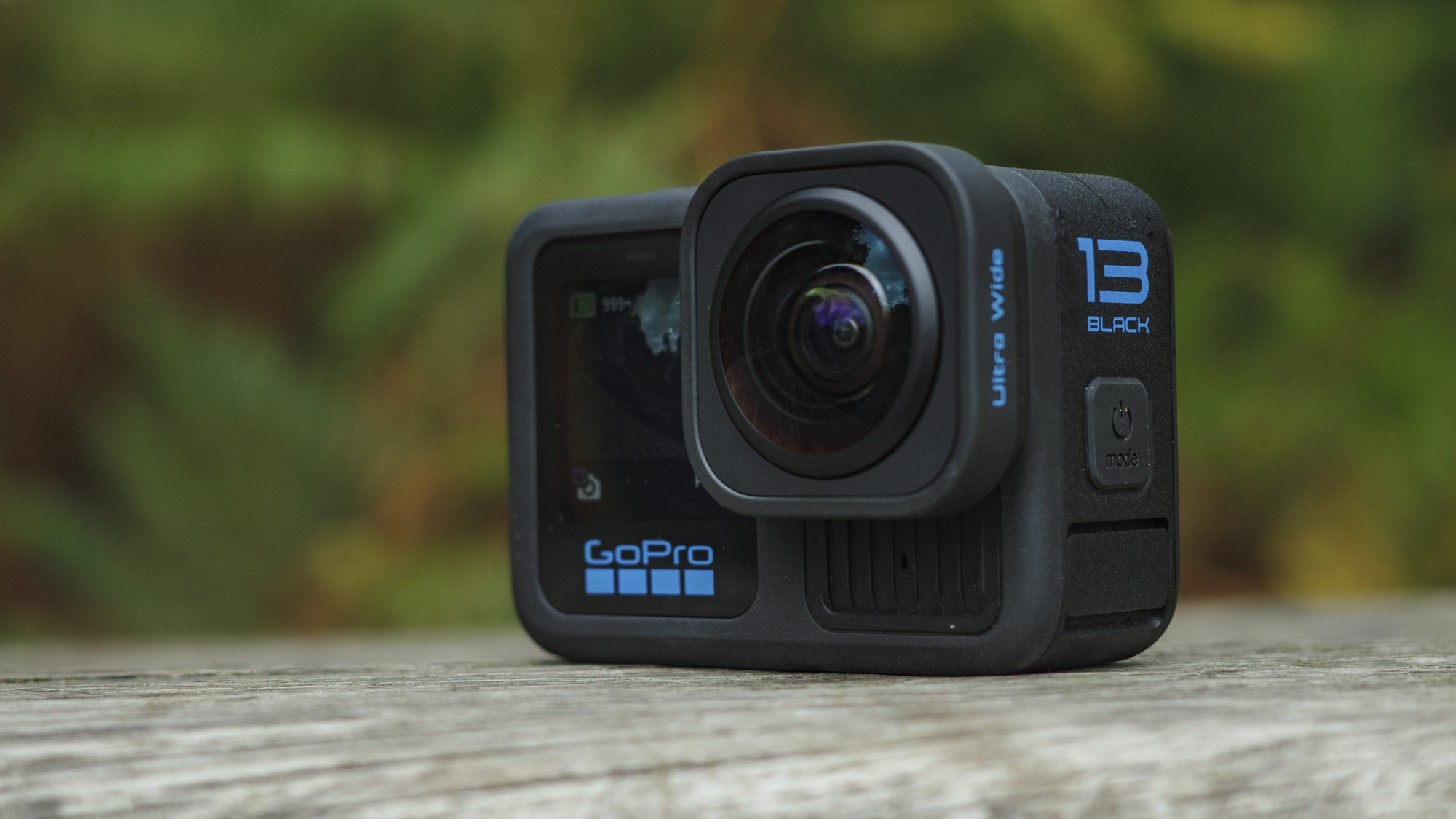
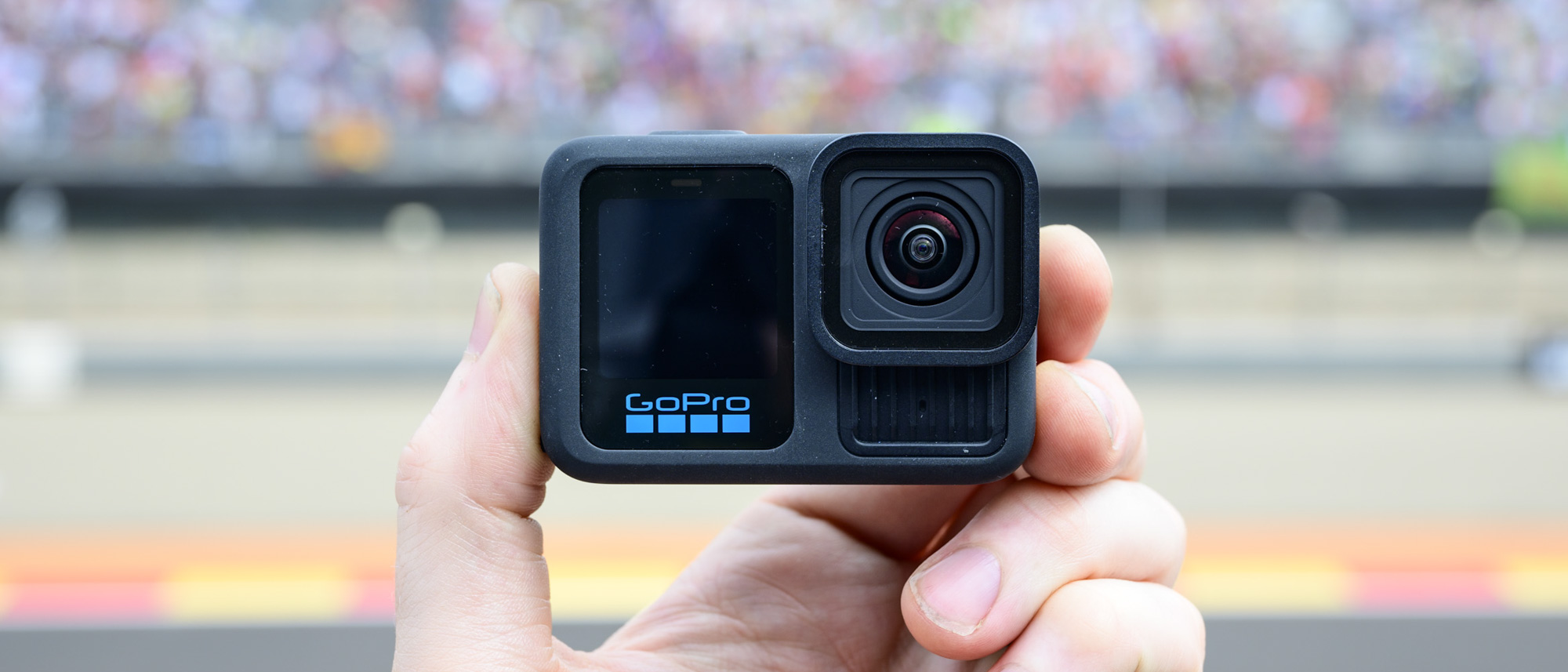
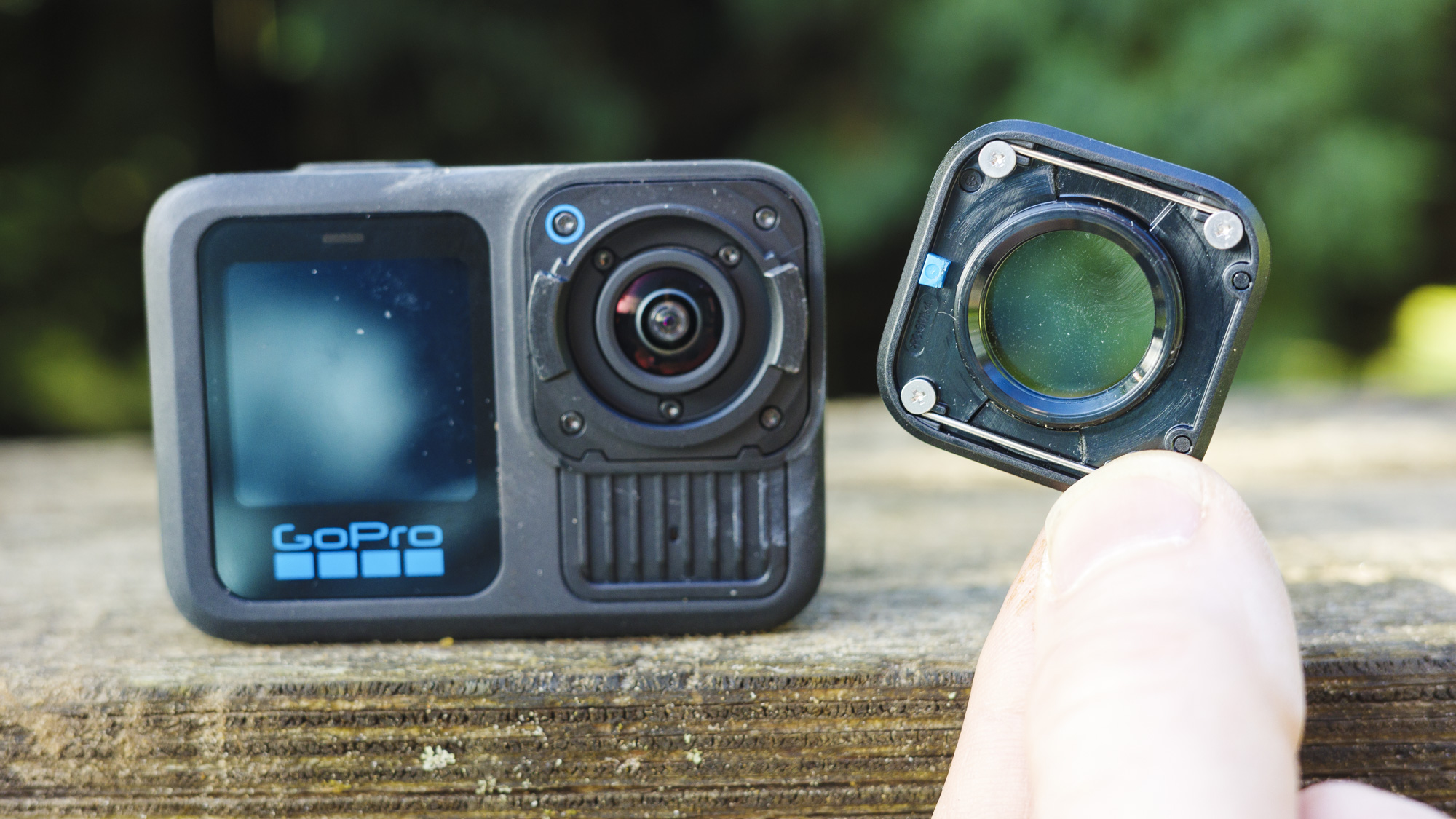
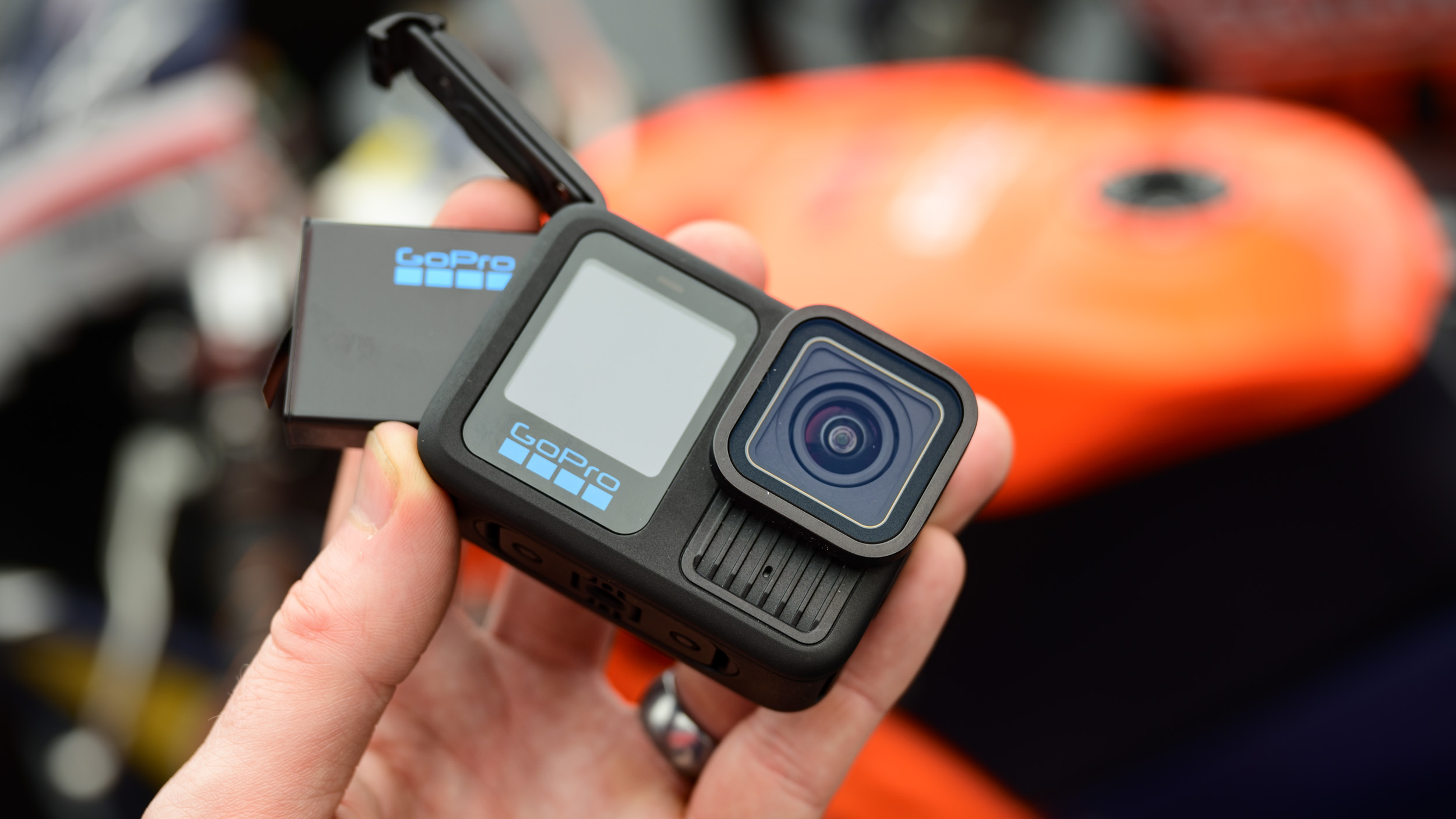
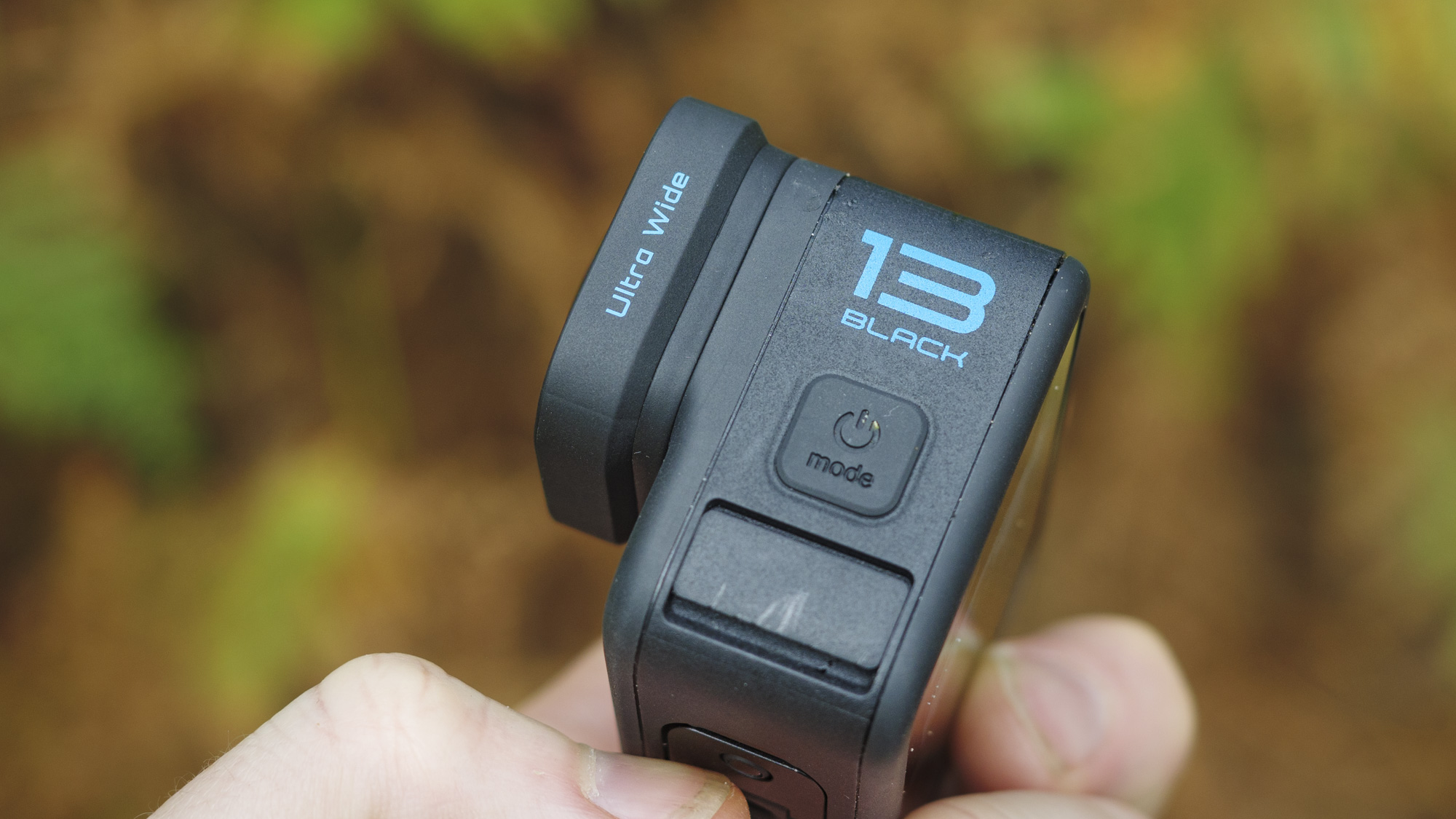
Specifications
Reasons to buy
Reasons to avoid
✅ You plan to shoot for social: Because it shoots native 5.3K with an 8:7 aspect ratio, the Hero 13 makes it easy to reframe footage for different channels.
✅ You like the idea of accessories: As well as numerous underwater add-ons available for the Hero 13’s mounting feet, Lens Mods can get you different looks and capture details.
❌ You shoot in dim underwater conditions: The Hero 13 Black is at its best when things are bright, with noise still an issue when you shoot in the murky depths.
❌ You want class-leading battery life: Even with GoPro’s larger Enduro battery inside, the Hero 13 can't compete with the Osmo Action 5 Pro.
Physically, the Hero 13 Black is almost identical to its predecessor, including its 10m waterproof rating which can be upped to 60m with GoPro's underwater housing. It likewise uses an 8:7 aspect ratio sensor to capture 5.3K video that can easily be cropped for social, while itss slow motion recording has been improved for cinematic effects. With the addition of HDR video and GoPro's 10-bit Log color profile, we found the Hero 13 Black able to capture sharp, smooth and dynamic video in bright conditions, plus you can snap 27MP photos. Low-light remains an issue for video quality, meaning the GoPro and can't compete with DJI's Osmo Action 5 Pro especially for deep water adventures.
GoPro brought back built-in GPS, with the option to include performance stickers in your videos, including altitude / depth. There's also magnetic mounting now, and so there's three ways to attach accessories. And it's GoPro's range of accessories that sets its action cameras apart. Not only do you have a choice of optional Lens Mods, including Macro for close ups such as coral, or the ultra-wide for a wider perspective, but the camera's door can be removed and replaced with a new waterproof charger accessory. Trail its cable out of the water to your power source, and the Hero 13 Black can have unlimited power supply, ideal for long videos in the pool. GoPro also improved battery life in its latest flagship, but its another area that the Osmo Action 5 Pro outshines the Hero 13 Black.
Otherwise, the same front and rear screens are handy for framing yourself at sea, even if the rear touch interface doesn’t work underwater. If you want a feature-packed action cam that can shoot sharp video above and below water, with unique accessories especially lenses, then the GoPro Hero 13 is our top pick.
Read our in-depth GoPro Hero 13 Black review
The best waterproof camera with LED lights
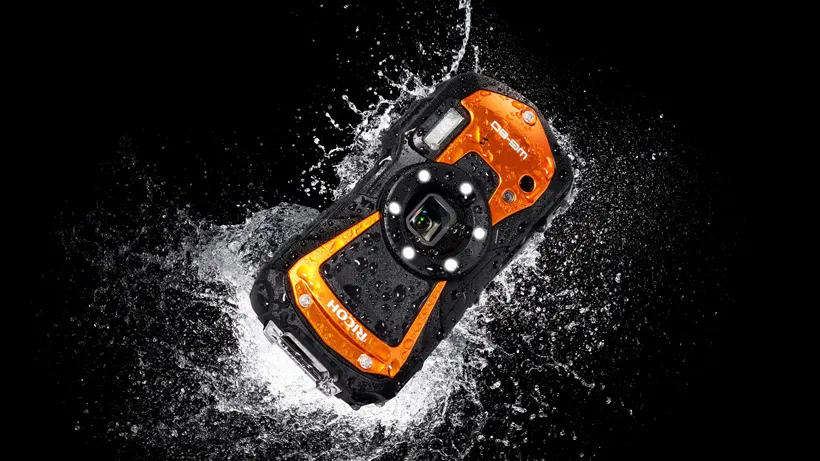
4. Ricoh WG-80
Specifications
Reasons to buy
Reasons to avoid
✅ You need something really tough: As well as being waterproof to 14m, the WG-80 is crushproof, shockproof, dust-proof and freeze-proof.
✅ You want a versatile shooting tool: The WG-80 combines a 5x zoom lens with close-focusing for macro shots, meaning you can cover a range of subjects.
❌ You want the best image quality: Stills from the WG-80 can be disappointing and its sensor is beaten in high-contrast scenes by most modern smartphones.
❌ You plan to shoot a lot of video: With footage capped at 1080p/30fps, there are better options in this list for recording video underwater.
The WG-80 from Ricoh has some pretty strong tough credentials: it's waterproof to a depth of 14m/45.9ft and shockproof from a fall of up to 1.6m/5.2ft, while it should withstand a force of up to 100kg/220lbs. It's also dust-proof and can operate in temperatures down to -10°C/14°F. While we think it can't quite compete with the OM System Tough TG-7, it also costs quite a lot less.
The 5x optical zoom has a pretty broad focal zoom range, from 28-140mm, while there are six LED macro lights dotted around the front of the lens barrel to deliver bright and uniform lighting round your subject – ideal when shooting underwater subjects. The macro lights also provide other useful functions, such as the LED Lighting mode, which uses the lights for adding light to portraits in poor light, delivering a more flattering look than the WG-60’s dedicated flash.
Ricoh has since launched the WG-90, but it was only a modest upgrade and it's much pricier than the WG-80 with its current sale price, so we think the older WG-80 is the better buy.
The best 360 degree waterproof camera
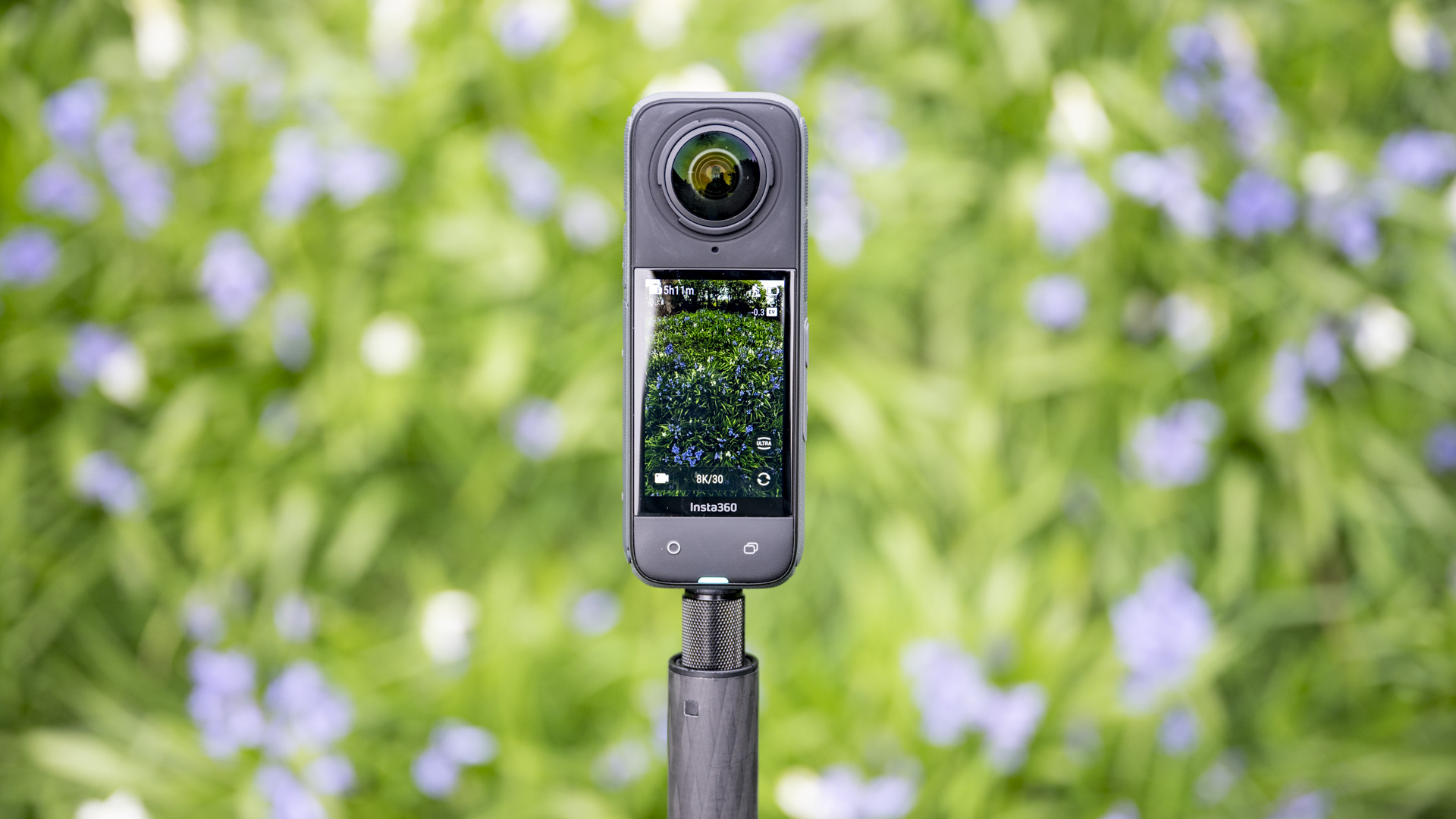
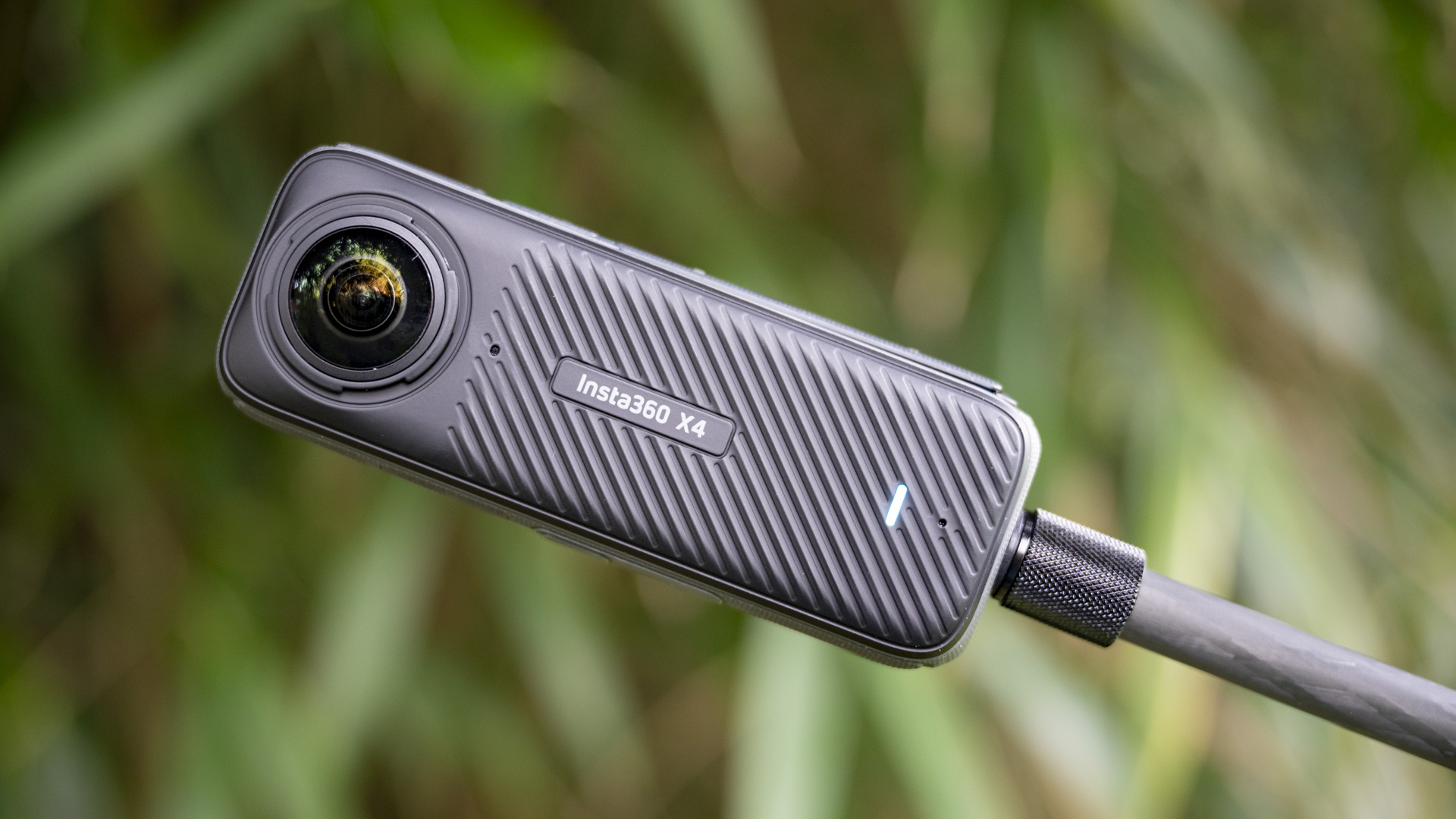
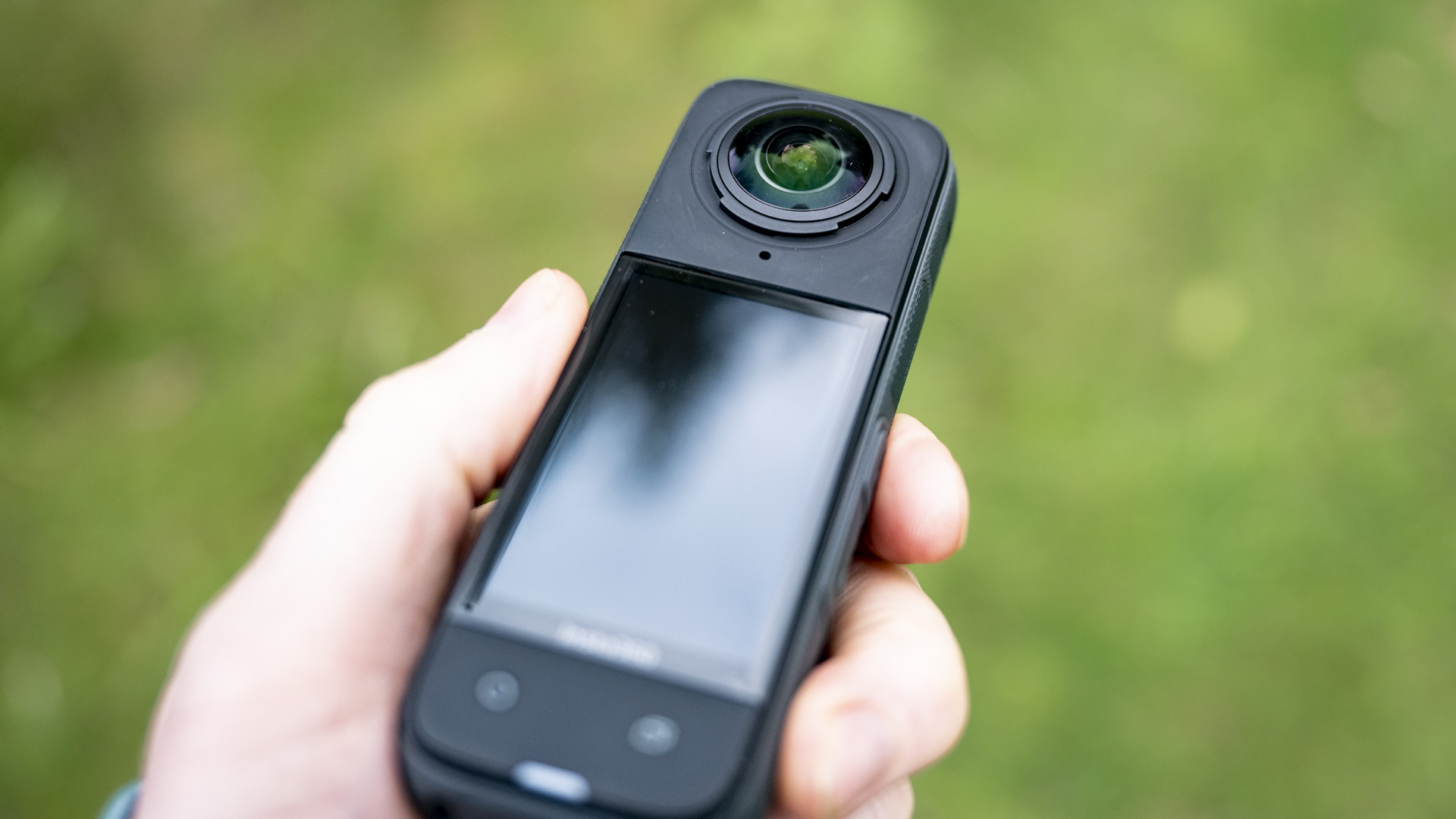
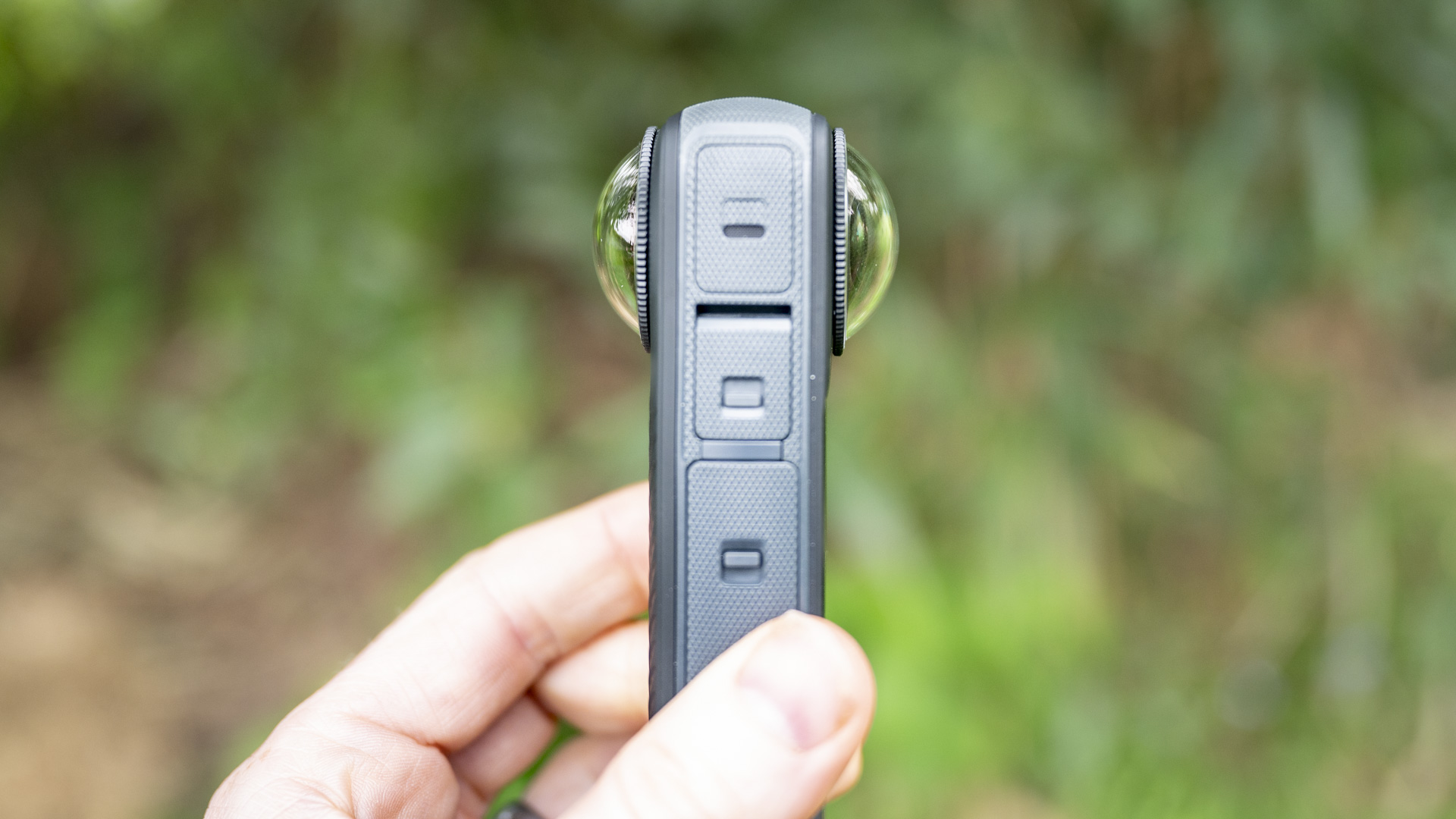
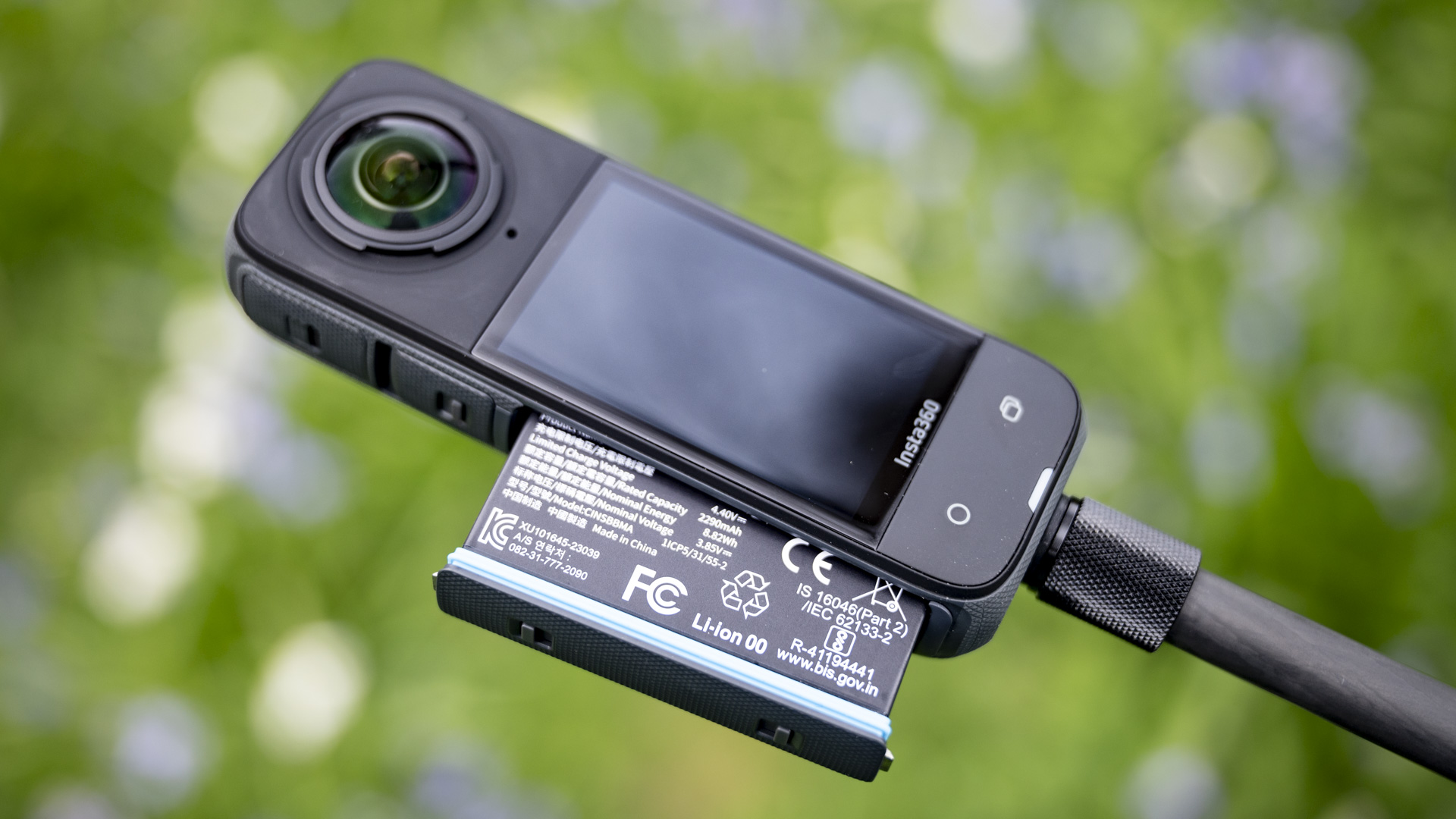
Specifications
Reasons to buy
Reasons to avoid
✅ You want a compact 360 camera: The Insta360 X4 makes it easy to shoot and edit 360-degree video, producing results that no smartphone can match.
✅ You want to shoot 360 under the sea: Thanks to locking port covers, the X4 is fully waterproof to 10m, meaning you can safely swim with it.
❌ You don’t have the capacity of large files: 8K video files require a large amount of storage space and processing power, so they don’t work for everyone.
❌ You shoot a lot in low light: Although the camera and Insta360’s software work hard to clean up video, results are still at their most crisp in bright conditions.
We waxed lyrical about the best 360-degree camera in our Insta360 X4 review, but it's also way more than an 8K 360-degree video camera. It also packs a powerful single camera 4K 60p mode and, crucially, it's waterproof up to 10m. That's not as deep as dedicated options like the Tough TG-7 or discontinued models like the Nikon Coolpix W300, but we think its rare for most people to go deeper than 10m.
What you do get with the X4 is photos and videos with a difference: complete panaromas of every angle, stabilized footage, smart video effects using Insta360's Studio app and more. The host of accessories that make taking your underwater photos and videos easier, such as a range of selfie sticks, only adds to the appeal. If you're after a camera that's as capable on land for all your adventures as it is underwater, this could be the option for you.
Read our in-depth Insta360 X4 review
The best budget GoPro
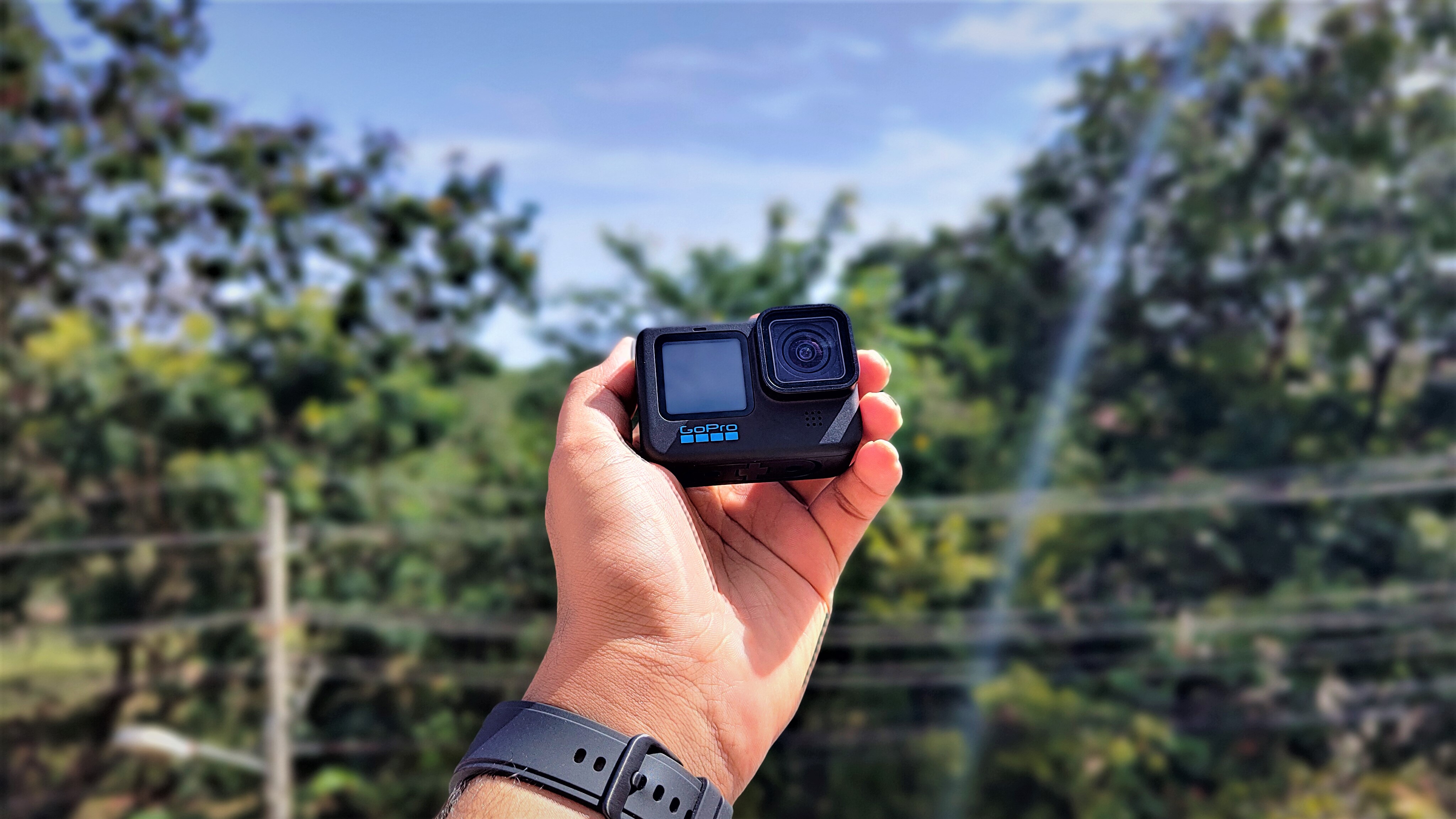
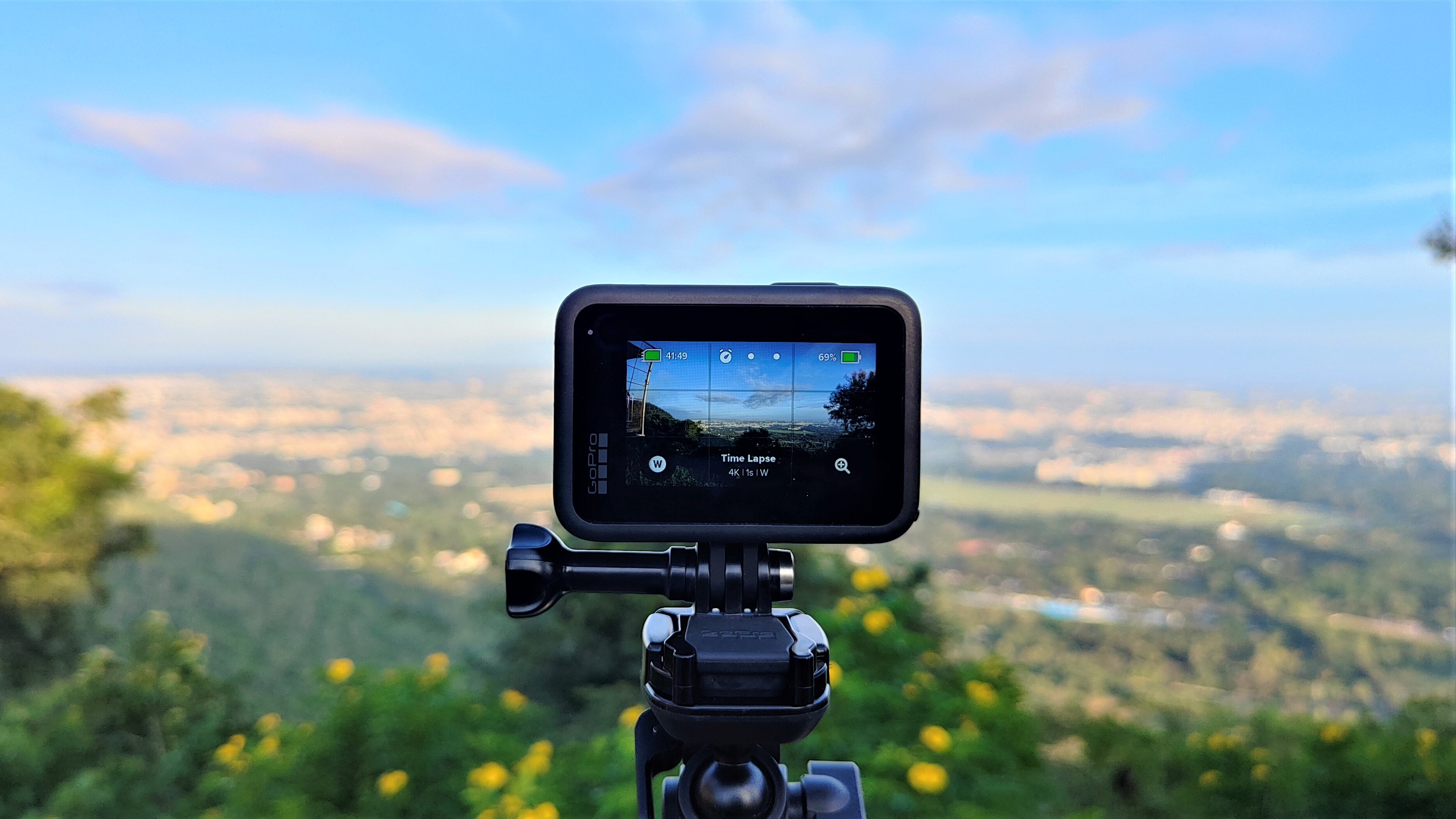
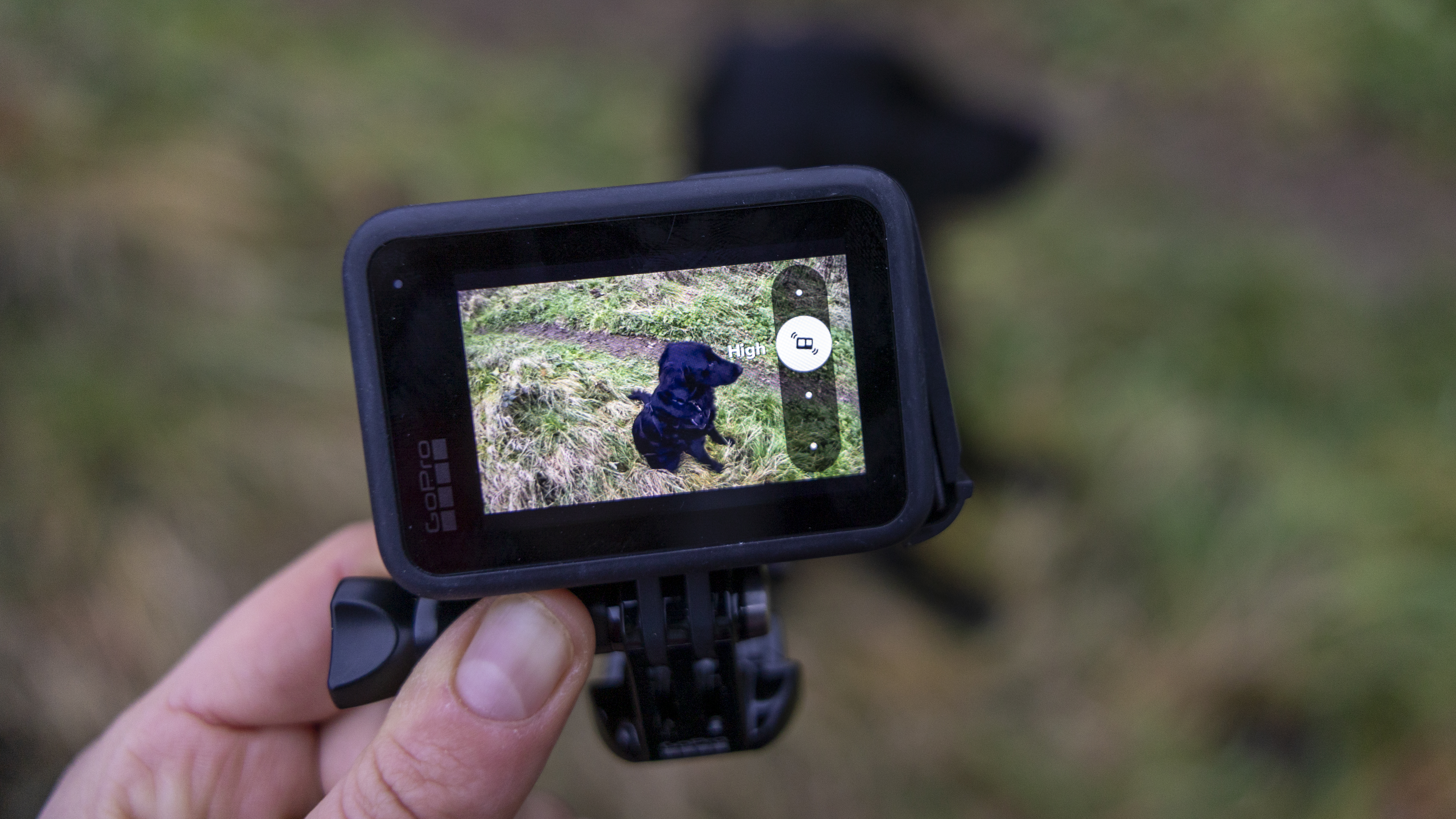
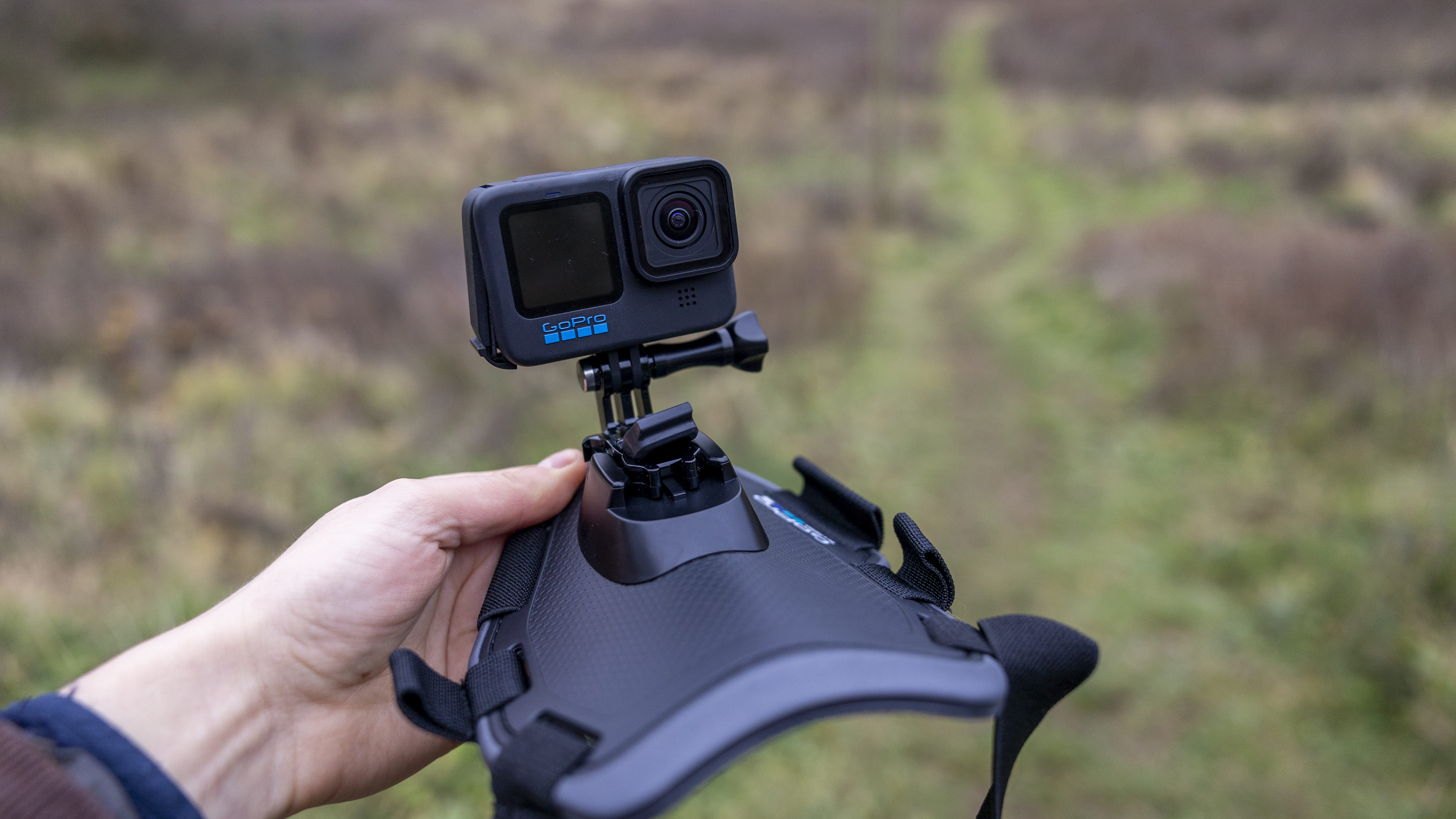
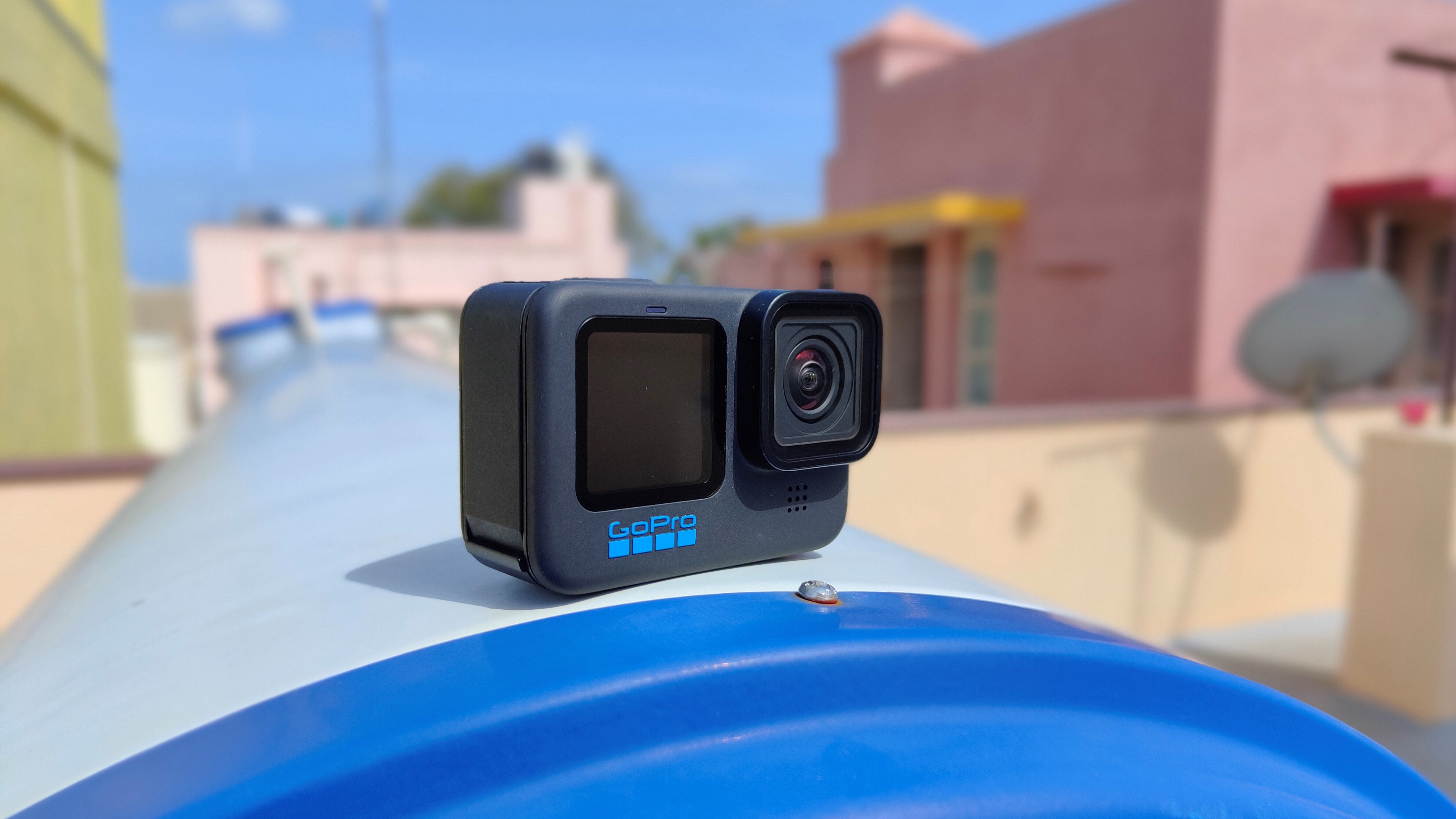
Specifications
Reasons to buy
Reasons to avoid
✅ You want a waterproof vlogging camera: Waterproof to 10m without a case and equipped with a useful front screen, the Hero 10 Black is a good self-shooter.
✅ You want a good-value GoPro: It’s not the latest model in the GoPro line-up, but the Hero 10 Black offers a lot of features for a price that’s now more reasonable.
❌ You want properly cinematic video: Results from the Hero 10 Black can be great, but later models like the Hero 12 Black achieve a more cinematic look.
❌ You need a low-light winner: Noise reduction helps, but its relatively small sensor means the GoPro Hero 10 Black still isn’t a champion in low light.
The Hero 10 Black is no longer top of the GoPro pile, but it remains a great choice if you want to save money on a waterproof action camera and don’t need 10-bit recording or support for vertical video. In our tests, we found both its 5.3K/60p and 4K/120p footage impressive. We also found it versatile, fun and easy to use, even if its responsive touchscreen doesn’t work underwater.
With HyperSmooth stabilization available across most shooting modes, it’s an ideal tool for recording high-resolution clips in all conditions. Low light does remain a challenge, though, which means performance will drop off if you test its 10m waterproofing in dim conditions. The latest GoPro Hero 12 Black offers more editing flexibility, while the DJI Osmo Action 4 performs significantly better in low light. But if you want a GoPro action camera without the flagship price tag, we think the Hero 10 Black is still a great option to consider.
Read our in-depth GoPro Hero 10 Black review
The best miniature waterproof camera
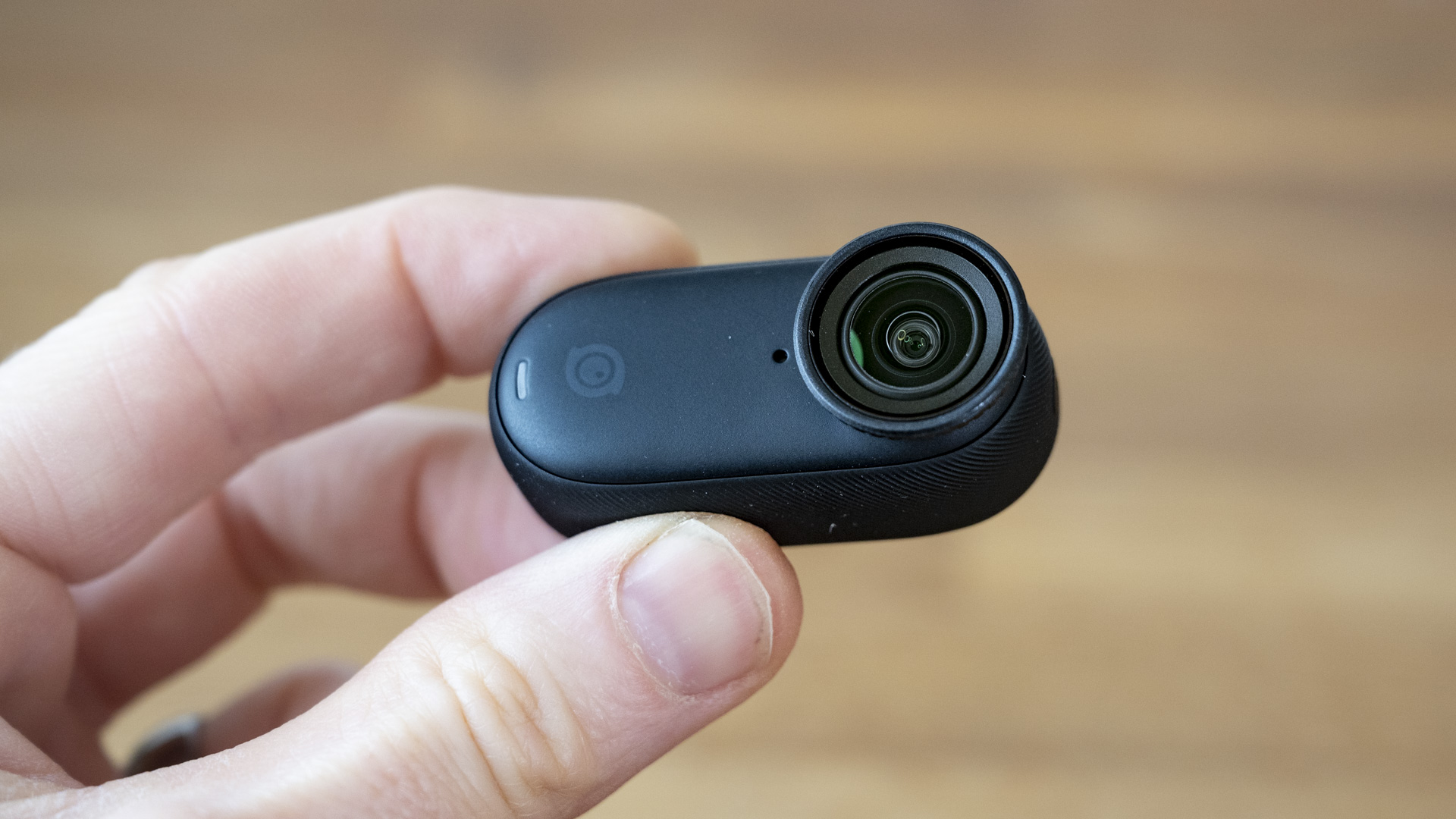
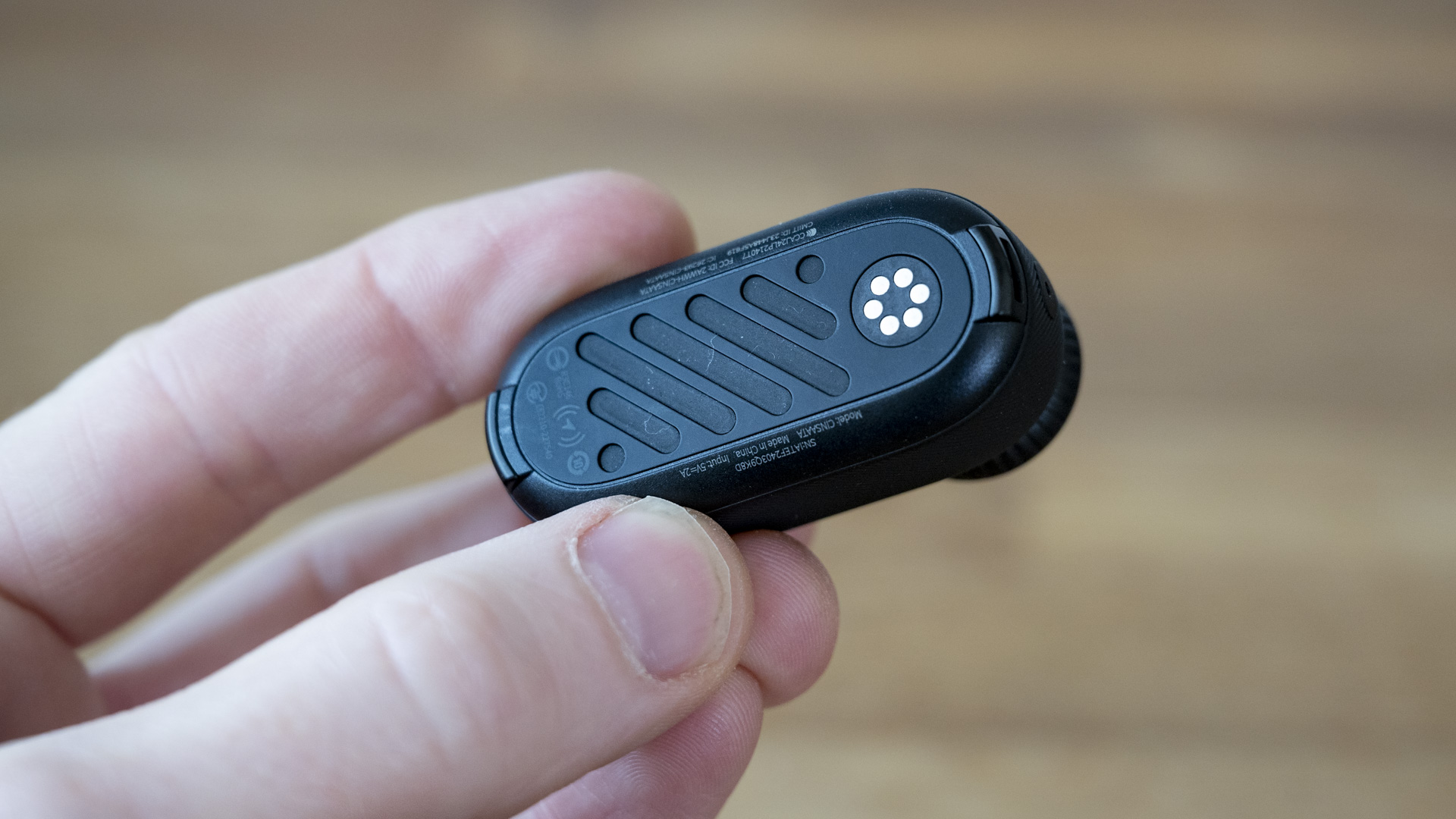
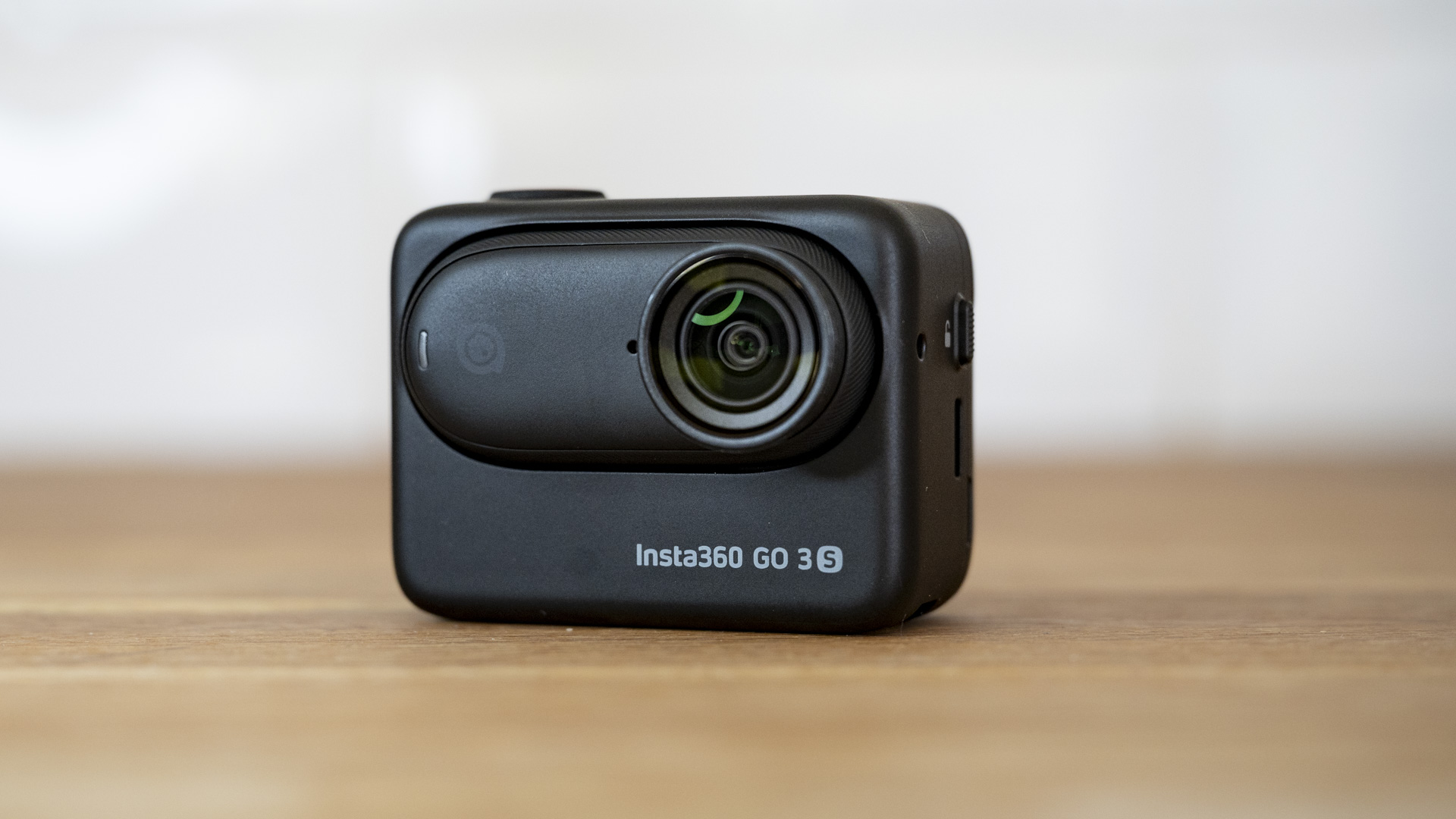
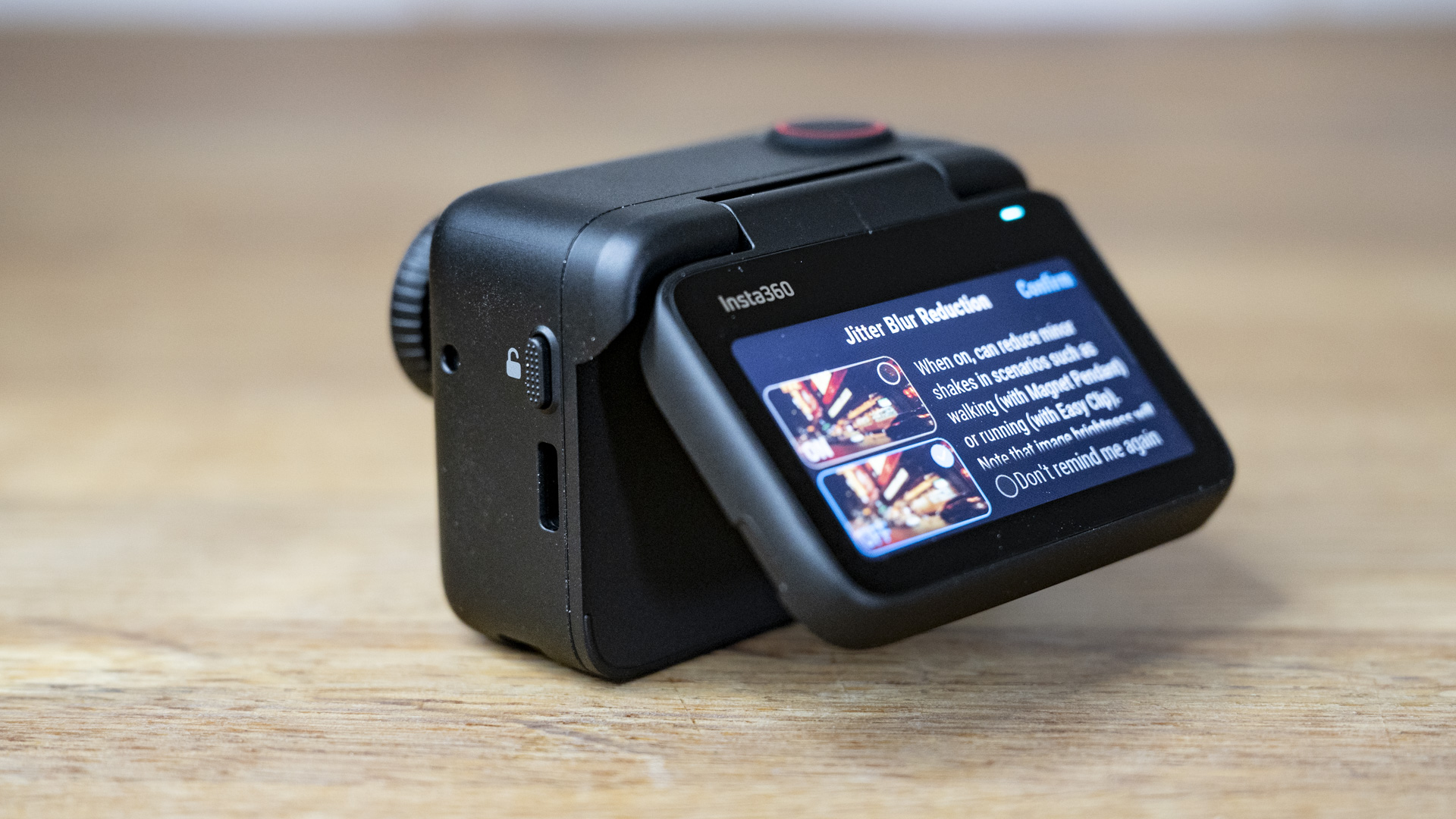
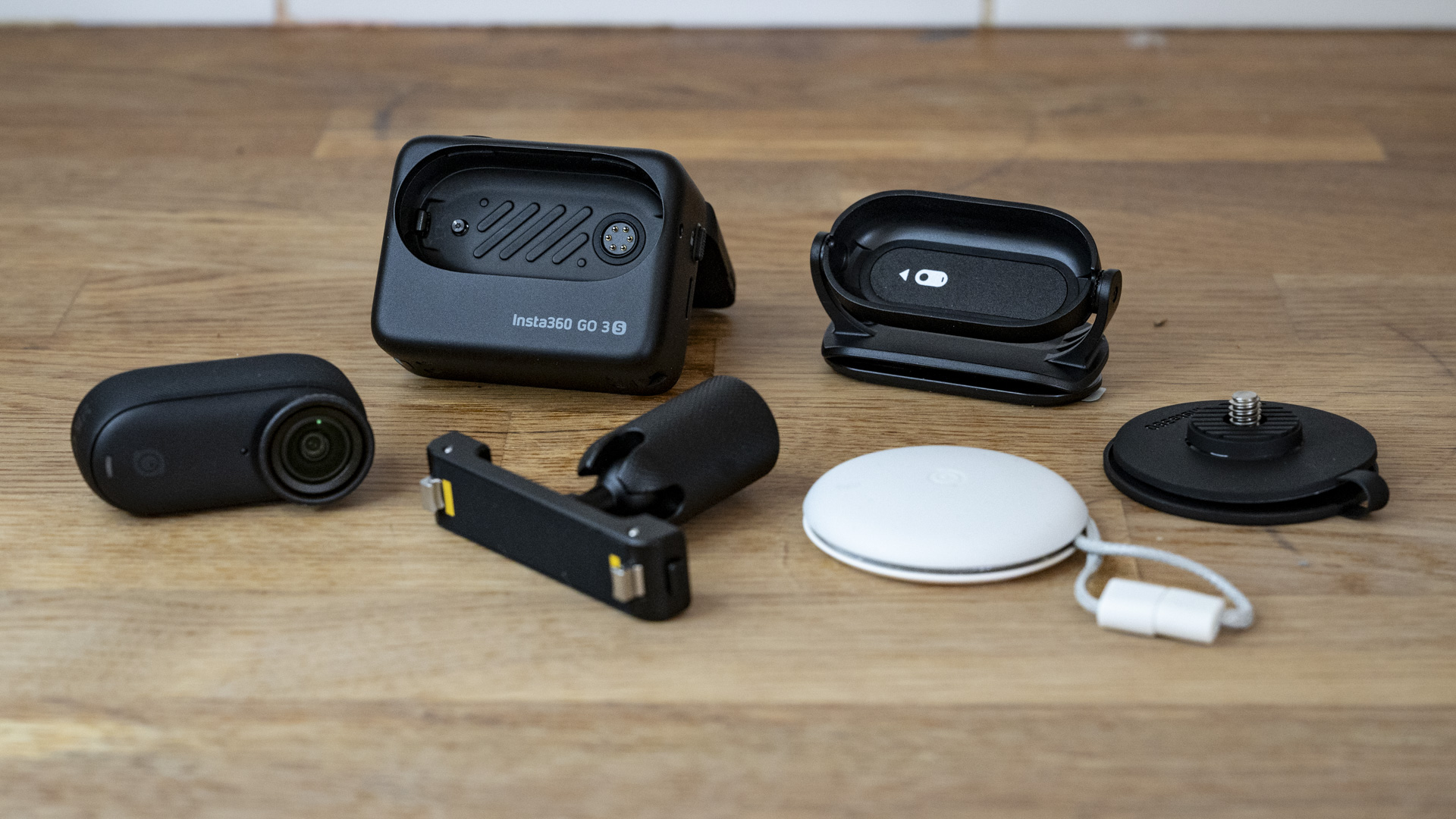
Specifications
Reasons to buy
Reasons to avoid
✅ You want a miniature action camera: The beauty of the Insta360 Go 3S is it's small as waterproof cameras come, letting you capture unique angles.
✅ You want to to forget about framing: The FreeFrame mode lets you shoot footage without framing, then loss lessly crop it later on.
❌ You want to capture the sharpest video: With a maximum video resolution of 4K, the Insta360 Go 3S isn’t the sharpest tool for waterproof video in this list.
❌ You want a completely waterproof solution: The camera itself is waterproof to 10m, but the add-on ActionPod with its screen extra features is only water-resistant so you can only take the camera for underwater shots.
If you want a tiny waterproof camera for your next beach trip, we think the Insta360 Go 3S could be just the ticket. What it lacks in video quality and stabilization tricks, it makes up for in miniature versatility: the camera features a magnetic mount that can stick to all sorts of surfaces and is so small that you can position it for unique perspectives – this is creative filmmaking. It also comes with an arsenal of modular accessories. The main peripheral is the Action Pod, which features a flip-up touchscreen that makes framing easier. Sadly, this isn’t waterproof, so you’ll need to leave it in your dry bag when you take the core camera unit into the sea, and which means you are shooting blind.
With 4K/30p video, the Go 3S’s video specs can’t compete with rival action cameras on resolution or frame rates, nor can the low light image quality. That said, videos from our review had decent contrast and dynamic range, plus the AquaVision 2.0 setting in the Insta360 app is also a useful addition, leveraging AI to enhance colors and combat underwater glare. It can’t add missing detail, but it does make a difference.
Read our in-depth Insta360 Go 3S review
Also consider
We've tested way more waterproof cameras beyond those included in the guide above. Here are the best of the rest:
Best with viewfinder – Panasonic Lumix TS7 / FT7: Launched in 2018, the Panasonic Lumix TS7 (known as the Lumix FT7 outside the US) is several years old now but it remains relevant by virtue of one feature in particular: a built-in electronic viewfinder (EVF), something rarely seen on a waterproof camera. The 1,170k-dot, 0.2-inch display might not be the largest out there, but it does offer a useful alternative to shooting with the rear display, especially in bright light, which can make composition tricky.
Best for 8K video – Insta360 Ace Pro 2: Besides GoPro and DJI, Insta360 is another leading action camera maker, and its flagship Ace Pro 2 is the only camera of its kind able to shoot 8K video. It's waterproof credentials aren't bad either, down to 36ft / 12m, with an optional dive case increasing that performance to 197ft / 60m. Annoyingly, you'll need to remove the wind guard; a metal grille, lined with acoustic foam, that protects the front mic port from wind noise, before going underwater. But you'll be rewarded with super detailed videos and photos.
Best Ricoh – Ricoh WG-8: A modest upgrade of the WG-6, the WG-8 is practically indistinguishable from the older WG-6, besides the fact that the latter is available in green or black, rather than organe or black. Like the WG-6, it features a 20MP camera and a 5x zoom lens, with 28-140mm f/3.5-4.5 range. Other features include built-in GPS for geolocation, and a macro mode aided by a built-in ringlight.
How to choose the best waterproof camera for you
How to choose the best waterproof camera?
A key consideration when choosing a waterproof camera is its waterproof rating. If you only need a camera for beach trips, something with a rating of 10m should be fine, such as the Insta360 Go 3S. If you’re planning more adventurous underwater pursuits, look for something rated for deeper waters. The DJI Osmo Action 5 Pro is rated to 20m, while the Panasonic Lumix TS7 is good down to 31m, which should be enough for most recreational dives.
The best waterproof cameras are optimized for use underwater. That usually means tactile physical buttons that are easy to access and operate. Many also feature specialized shooting modes which adjust settings for underwater conditions, compensating for factors such as color distortion.
A good waterproof camera should be more than just water-resistant. You’ll want something with a robust construction that can withstand the rigors of your outdoor adventures. Consider factors such as shock resistance, dustproofing plus working temperatures, as well as the overall build quality.
If you’re planning to swim at dusk or dive deep, look for a camera with good low-light skills, such as the DJI Osmo Action 5 Pro, or one with built-in LED lights, like the Ricoh WG-80. For some cameras, these can be fitted as optional accessories. You might want to also consider the macro skills if you hope to capture the little details such as ocean life.
Many waterproof cameras have housings that limit the range of any optical zoom. That said, some models do offer a modest zoom range, such as the 4x zoom on the OM System Tough TG-7, which gives you additional flexibility to select sub-aquatic subjects.
Meet the team
Our team of reviewers are the best in the business. We take pride in our honest, real-world reviews, and have covered all the latest waterproof camera worth your attention.

Lauren Scott is an experienced journalist and freelance photographer based in Bath, UK. She's been in the industry for over ten years; as the former Managing Editor of our sister site Digital Camera World.

Tim is TechRadar's Cameras Editor and has been cutting his teeth in the photo and video industry for almost 20 years. He's personally reviewed a number of the cameras in this guide, including the Hero 13 Black.

Sam has been covering consumer electronics as a journalist for over 20 years, contributing to titles including Stuff, Wired, T3 and GQ while reporting on and reviewing everything from vintage cameras to video games. He now specialises in photo and video gear.
How we test waterproof cameras

☑️ 100s of cameras reviewed
☑️ 15 years of product testing
☑️ Over 16,000 products reviewed in total
☑️ Nearly 200,000 hours testing tech
When testing waterproof cameras, we do our best to simulate the demands of outdoor adventures in the real world. While we don’t test waterproof cameras to destruction, we do assess each model’s functionality while submerged, to ensure that build quality lives up to its billing.
Because waterproof cameras exist to let you shoot photos and videos in aquatic conditions, we assess every camera’s imaging performance in a range of scenarios. We test for color accuracy, detail and any signs of distortion. We also check the effectiveness of any underwater shooting modes to see how well these compensate for lighting conditions and color variation.
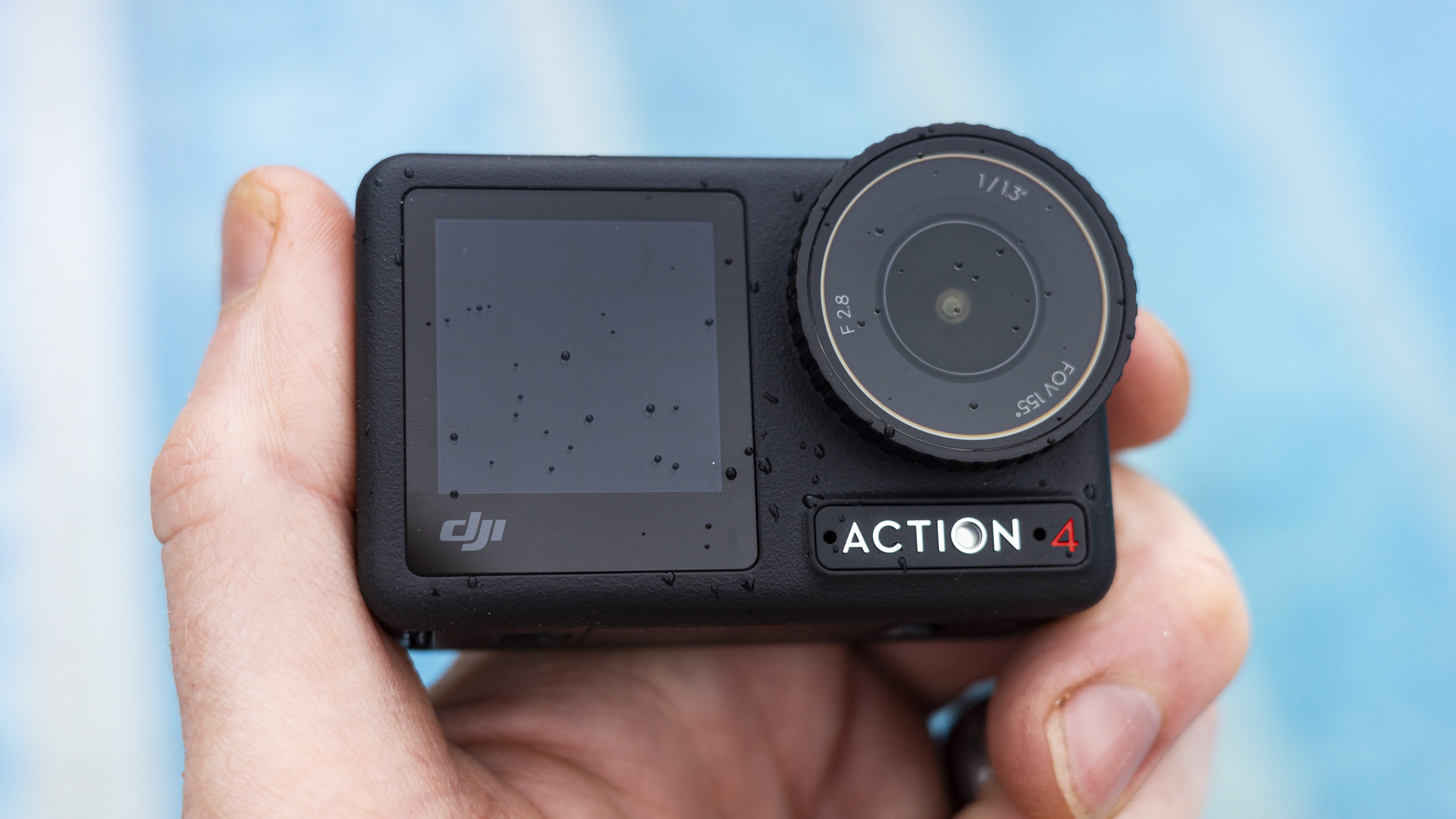
We also consider the practicality of each camera’s size, weight and build in the real world. Our testers assess how easily each camera can be used during various activities, specifically those in and around water, to check both its practicality and functionality.
To accurately assess battery life, we conduct usage tests to replicate common scenarios, such as burst shooting and a series of video clips. The aim is to see how actual figures stack up against claimed longevity.
Finally, we test any extra features to see how they enhance the overall user experience, including GPS and Wi-Fi.

Get daily insight, inspiration and deals in your inbox
Sign up for breaking news, reviews, opinion, top tech deals, and more.

Tim is the Cameras editor at TechRadar. He has enjoyed more than 15 years in the photo video industry with most of those in the world of tech journalism. During his time as Deputy Technical Editor with Amateur Photographer, as a freelancer and consequently editor at Tech Radar, Tim has developed a deeply technical knowledge and practical experience with cameras, educating others through news, reviews and features. He’s also worked in video production for Studio 44 with clients including Canon, and volunteers his spare time to consult a non-profit, diverse stories team based in Nairobi. Tim is curious, a keen creative, avid footballer and runner, and moderate flat white drinker who has lived in Kenya and believes we have much to enjoy and learn from each other.
- Chris Rowlands
- Mark WilsonSenior news editor